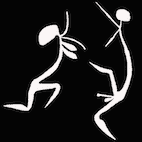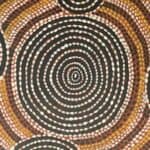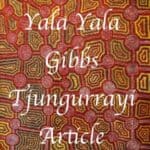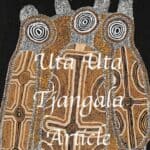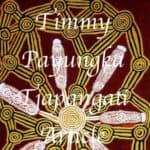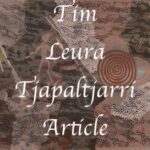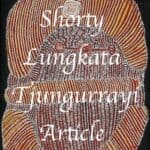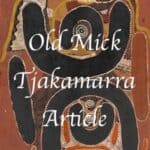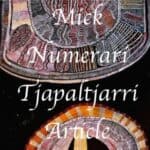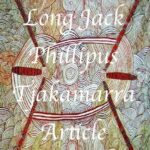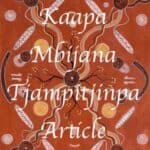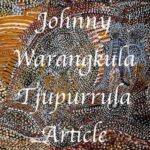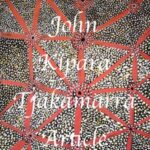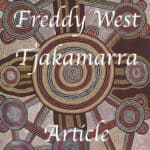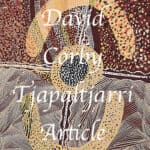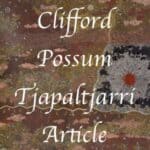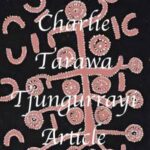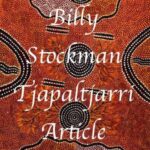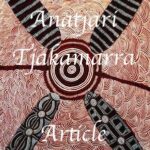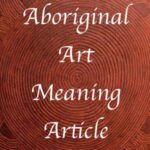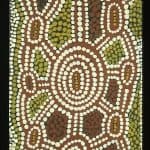John Kipara Tjakamarra Artworks
The most expensive John Kipara Tjakamarras artwork was sold in 1998 for $90,000 AUD
The artwork titled men and women was painted in 1972 and originally sold through the Stuart in Alice Springs. The painting is accompanied by a rare, hand-drawn diagram with annotations—likely created in 1972 by Pat Hogan, then-owner and manager of the Stuart Art Centre in Alice Springs.
The following insights are drawn from personal correspondence between Aboriginal art expert R.G. (Dick) Kimber and Sotheby’s, regarding the artist and this specific work.
The artist, a Pintupi man, had only limited contact with non-Indigenous Australians by the early 1970s. At the time of painting, he had spent most of his life living in small Pintupi camps west of Papunya and had likely never visited Alice Springs. Communication about the artwork’s meaning was minimal, as Pat Hogan spoke only a few words of Pintupi, and the artist had limited English.
Pat Hogan was only able to record a basic description: “The painting sings of the sharing of women by the men at a ceremony.” This phrasing is notable, as it acknowledges an early outsider recognition that Aboriginal paintings are often associated with song, ceremony, and storytelling—not just visual expression.
It is an important painting insofar as it represent a Tingari site—a sacred location tied to a complex network of Dreaming stories (Tjukurrpa) from the Great Sandy Desert, especially near what is now Kiwirrkura in Western Australia. Tingari site style paintings became far more common after 1975 and the series of concentric circles joined by travelling lines became an icon of aboriginal art.
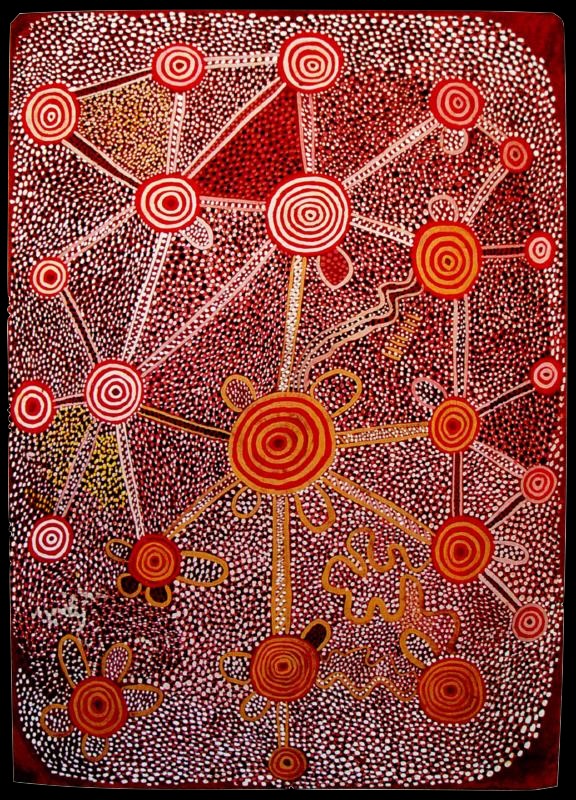
I specialize in the private treaty sale of early and significant artworks by Kipara Tjakamarra. If you have an example that you wish to have appraised please feel free to send me images and dimensions.
John Kipara Tjakamarra Artworks 1971
Kipara Tjakamarra began his painting career in 1971, producing early Western Desert artworks on masonite composition board using traditional Aboriginal colours—red and yellow ochres, white pipe clay, and black charcoal. These early paintings featured monochrome backgrounds and were stylistically raw and unrefined, reflecting his initial experimentation with the medium.
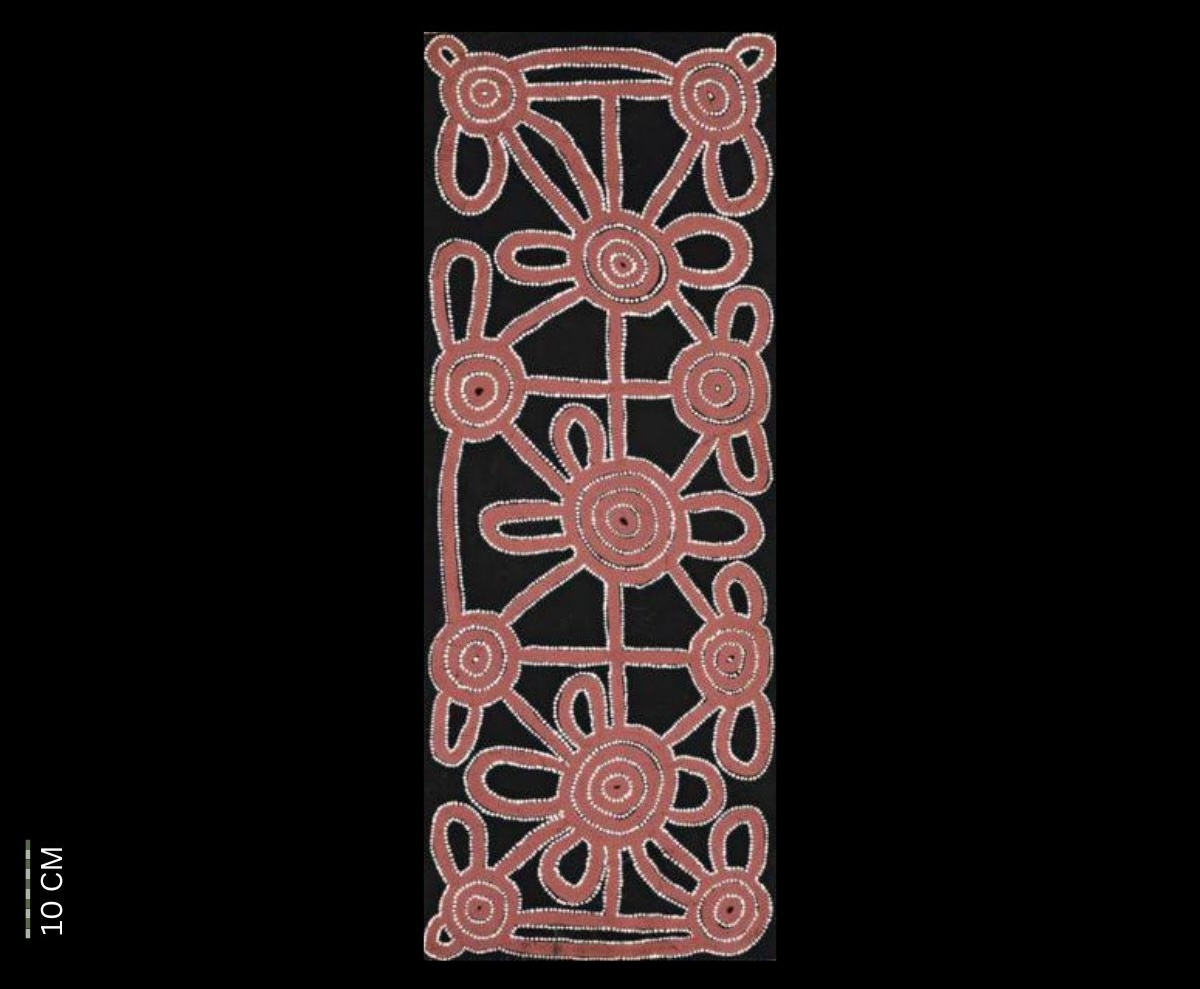
Man’s Corroboree 1971
Poster paint and synthetic binder on composition board,
92 x 35.5 cm
Hammerprice: A$32,000

Big Pintupi Dreaming, 1971
Synthetic polymer paint on board,
60.5 x 30.5 cm
Hammerprice: A$24,000
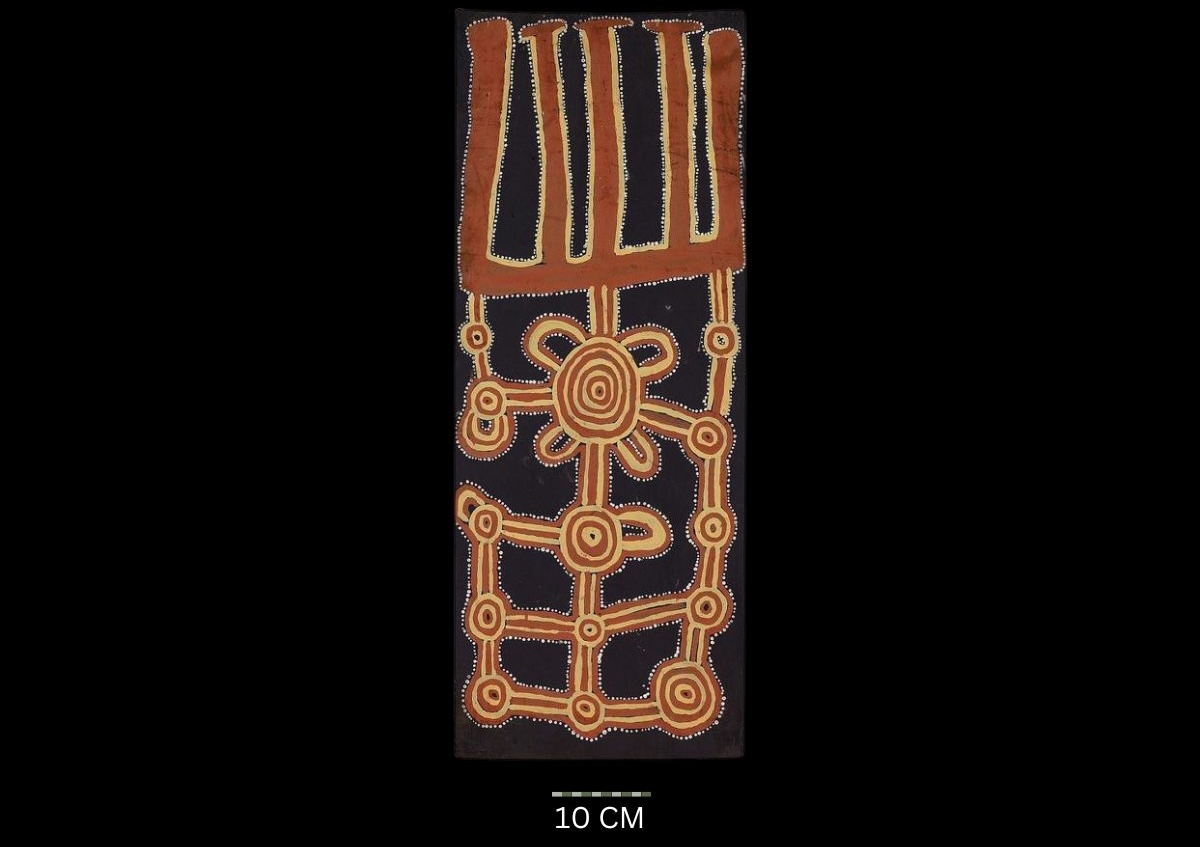
Corroboree Man Sitting in Cave (1971)
Synthetic polymer paint on composition board,
75.4 x 29.1 cm
Hammerprice: A$75,000
John Kipara Tjakamarra artworks: main period 1972 -1975
By 1972, Kipara had developed a clearer visual language centered on Tingari Dreaming stories, a key theme in Pintupi art. The Tingari cycle, depicting the mythic journeys of ancestral men and women across the desert landscape, was considered culturally appropriate for public display and thus became a dominant subject among Pintupi painters. Kipara’s 1972 works began to incorporate dotted infill and travelling lines, enhancing the visual impact of Tingari site depictions and breaking away from the earlier flat, monochromatic surfaces.
Despite often being allocated irregular or damaged offcuts of board, he consistently produced paintings featuring concentric circles connected by linear pathways, symbolizing ceremonial sites and the deep interconnection between Country, Ancestors, and Law. From 1973 to 1974, his colour palette expanded to include earthy pinks, browns, and oranges, while remaining grounded in natural desert pigments.
Unlike some of his contemporaries, Kipara rarely depicted sacred churinga objects, and when he did, they were abstract and understated. Following the 1974 restrictions placed on artists like Kaapa Mbitjana Tjampitjinpa, whose work contained highly sacred material, Kipara’s more secular Tingari style allowed him to continue painting uninterrupted. His later works grew in scale and retained their natural, muted tones, including variations of green and brown.

Men and Women 1972
Synthetic polymer powder paint on composition board
No size recorded
Hammerprice: A$90,000
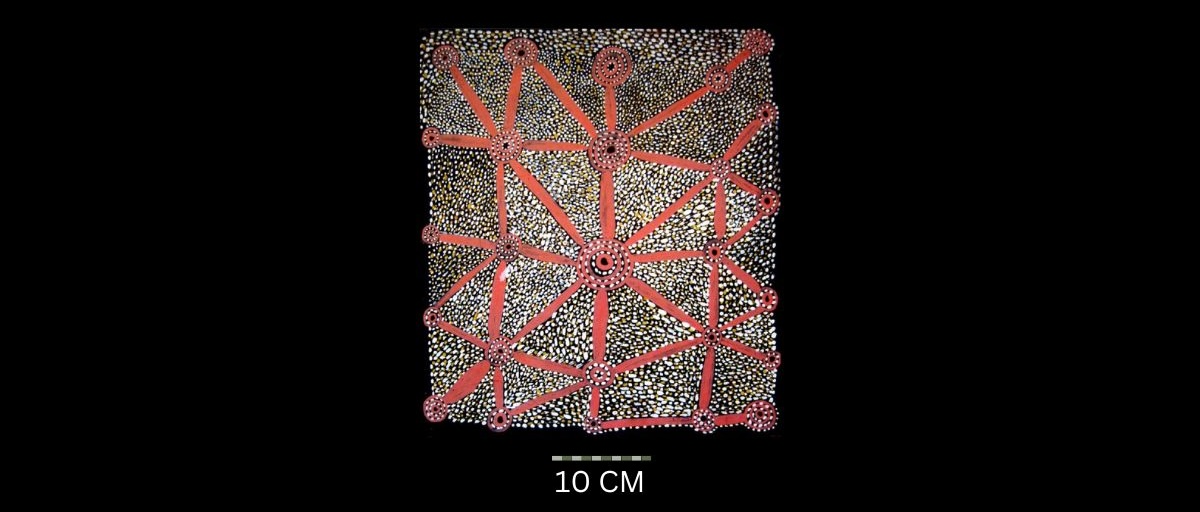
Travels of Tingari Ancestors 1972
Synthetic polymer powder paint on composition board 1972, bears signed Stuart Art Centre consignment number 18022 on the reverse,
40.5 x 35 cm
Hammerprice: A$55,000
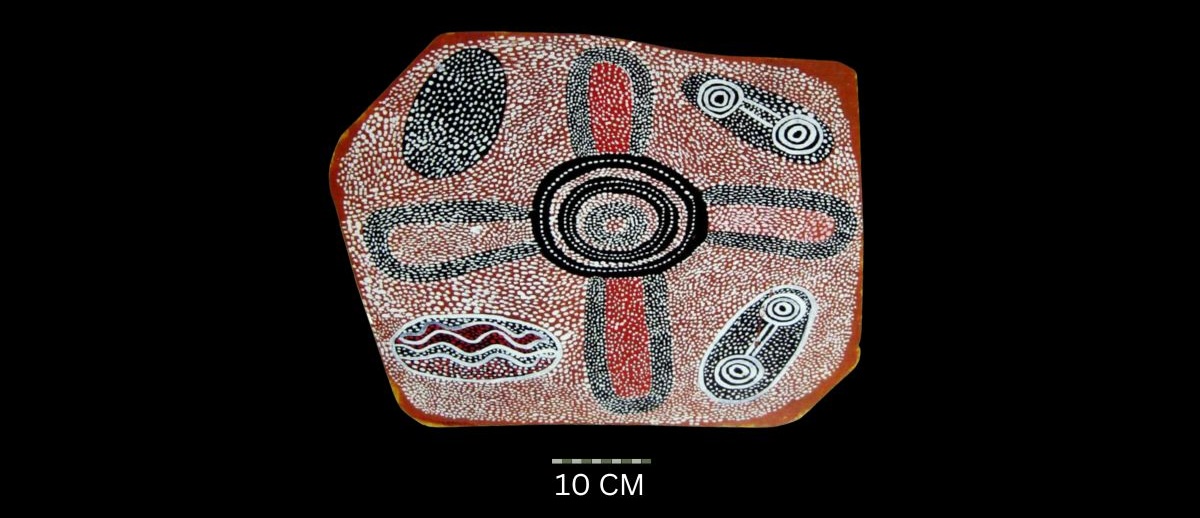
Untitled 1972
Synthetic polymer powder paint on composition board, bears Stuart Art Centre consigment number 19247 on the reverse,
54 x 55 cm (irregular)
Hammerprice: A$20,000
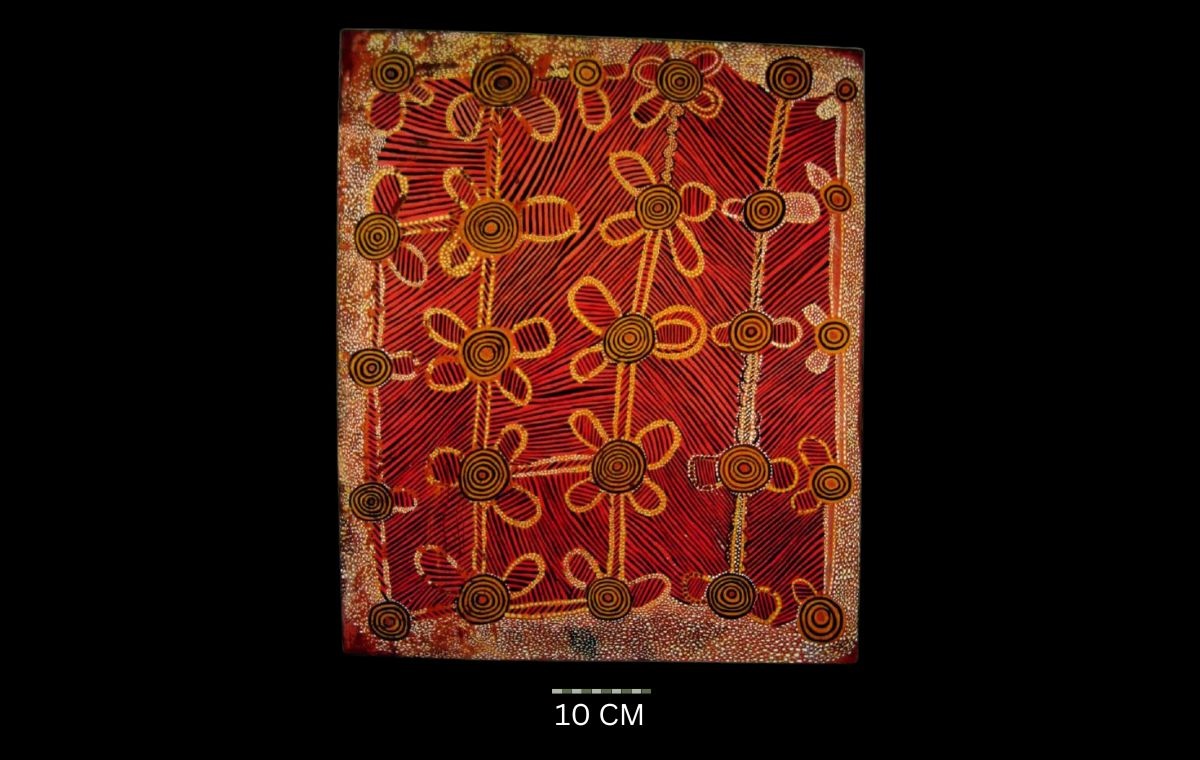
Untitled c. 1972
Synthetic polymer powder paint on composition board,
64 x 54.5 cm
Hammerprice: A$15,000
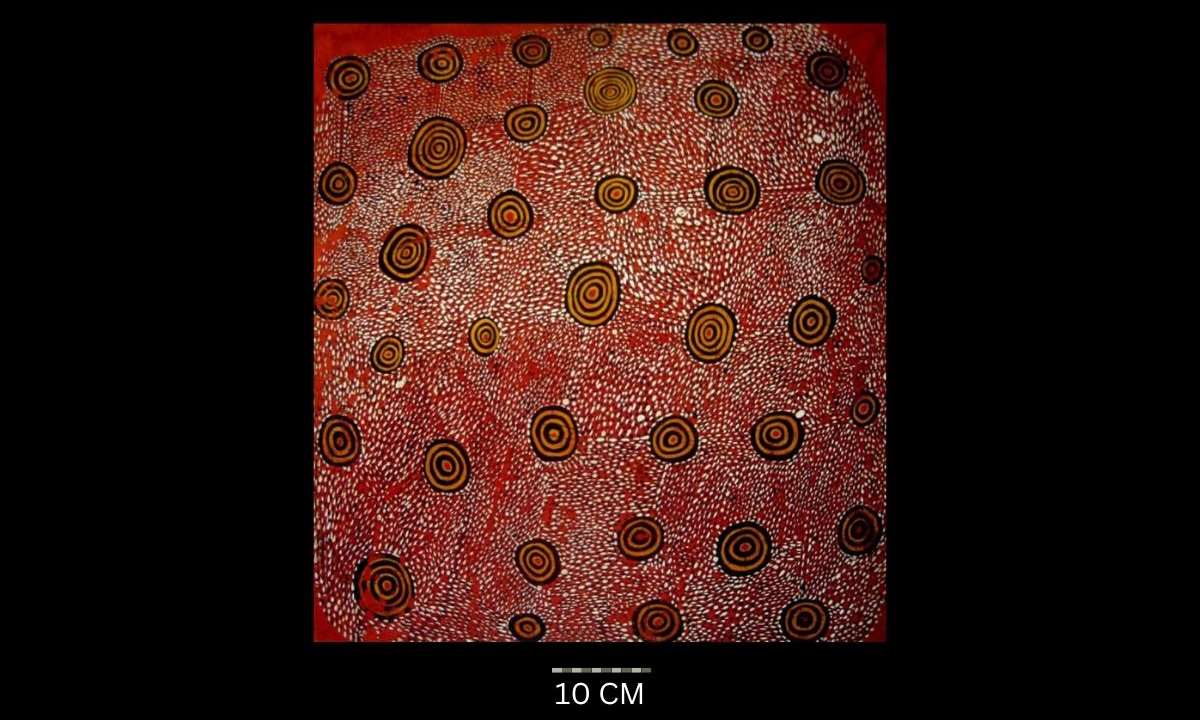
Untitled 1972
Synthetic polymer paint on composition board, bears No. 2 on the reverse,
61 x 56 cm
Hammerprice: A$14,000
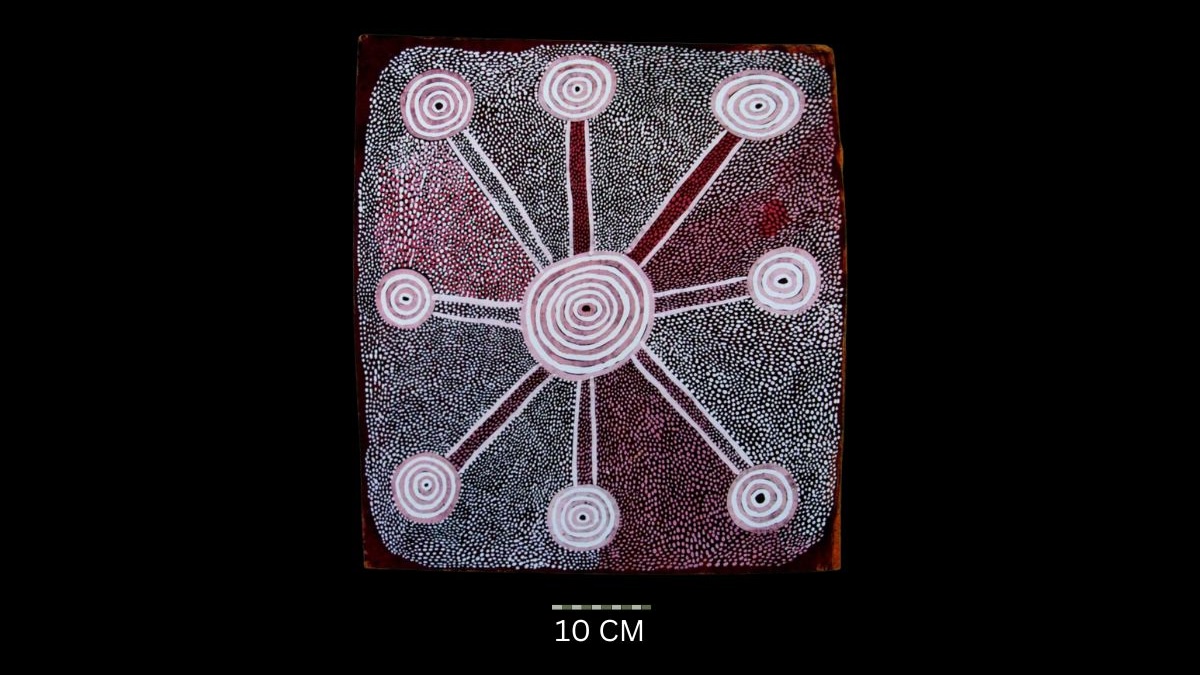
Old Mans Story 1972
Synthetic polymer powder paint on composition board, bears Stuart Art Centre consignment number 19245 in blue chalk and catalogue number JJI-AO on the reverse,
55 x 47.5 cm
Hammerprice: A$12,000

Old Man’s Story
Synthetic polymer paint on composition board, bears faint Stuart Art Centre catalogue number 19246 and Aboriginal Arts and Crafts serial number 1001267 on the reverse,
67.5 x 56.5 cm
Hammerprice: A$14,000
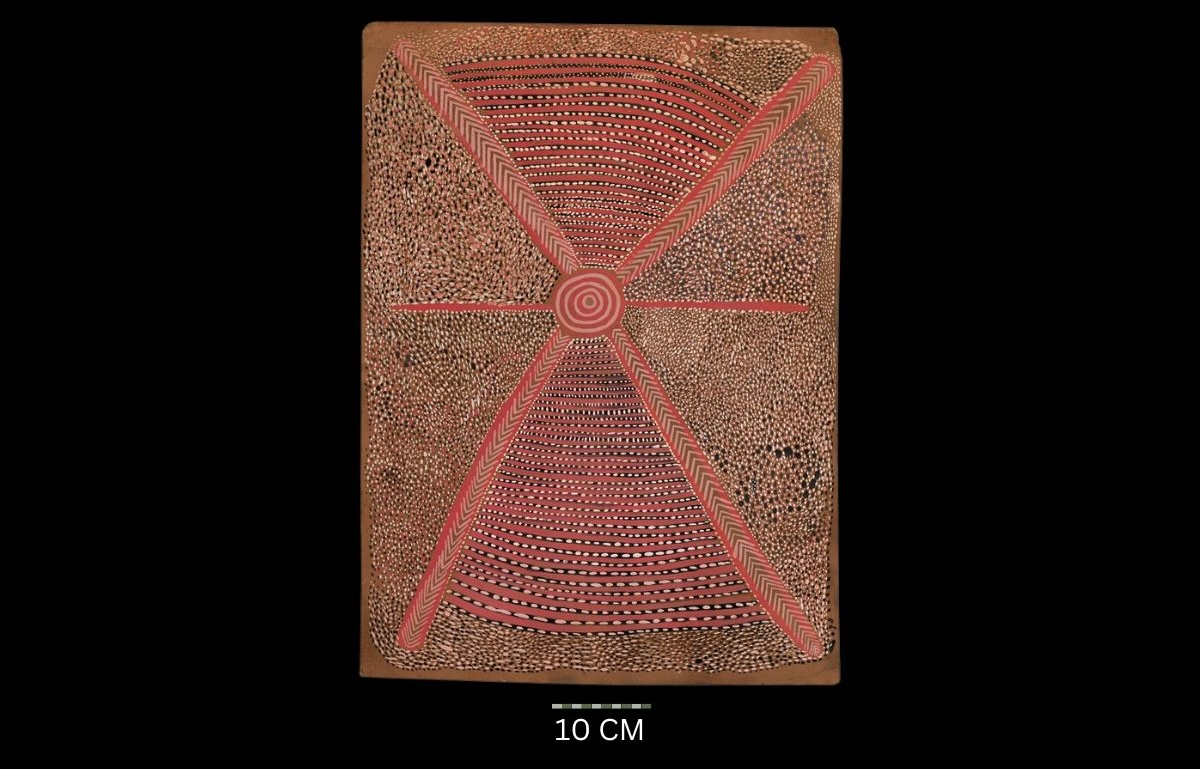
Untitled
Synthetic Polymer paint on composition board, bears Stuart Art Centre catalogue number 19153 on reverse,
66 x 47 cm
UNSOLD

Untitled c. 1972
Synthetic polymer powder paint on composition board,
61 x 44 cm
Hammerprice: A$10,000
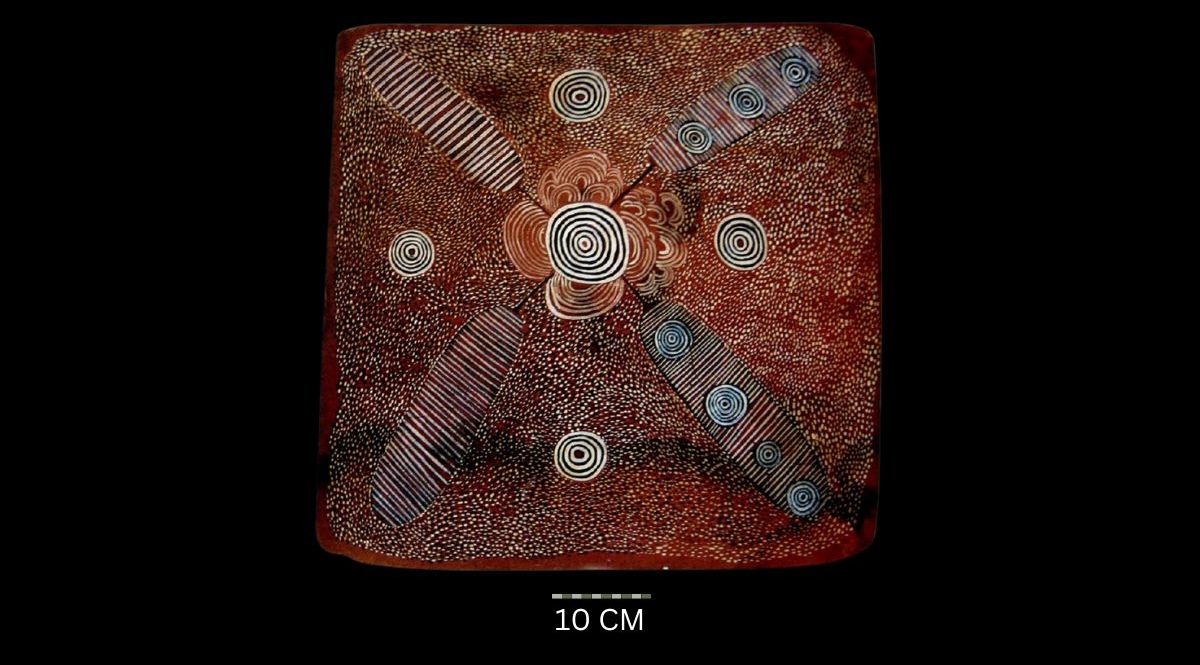
Untitled (Ceremony with Bullroarers) 1972
Synthetic polymer powder paint on composition board,
56 x 57 cm
UNSOLD
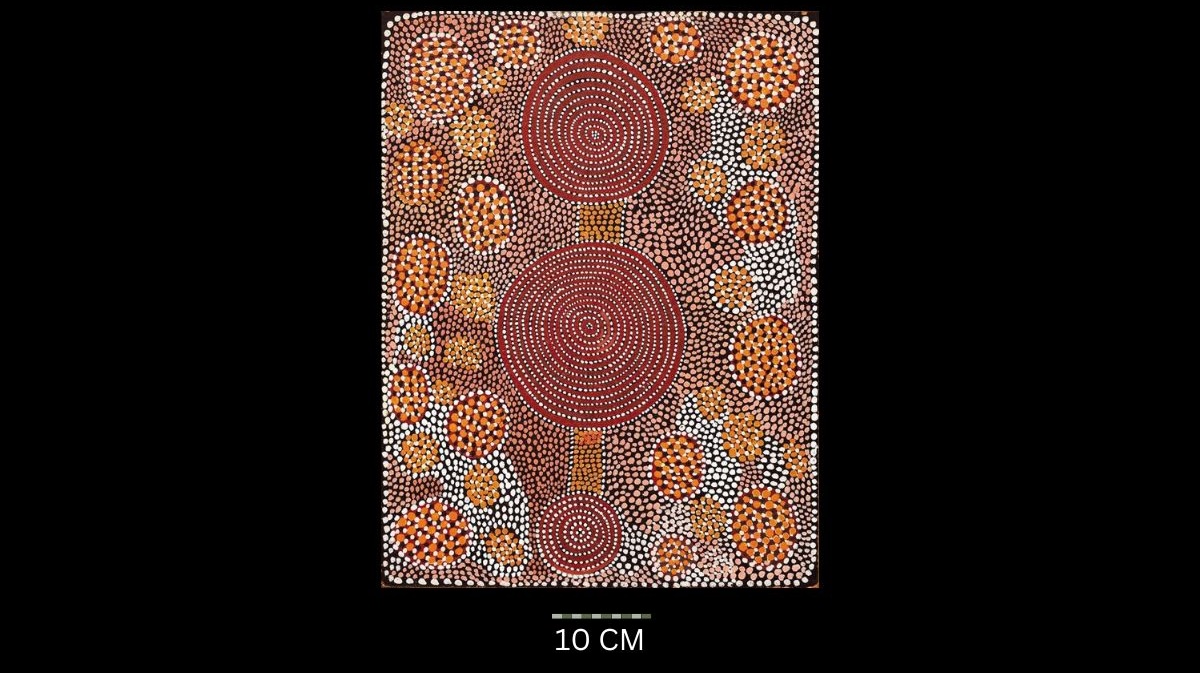
Claypans at Paratjakultjini, 1973
Synthetic polymer paint on composition board,
57 x 43 cm
Hammerprice: A$3,600
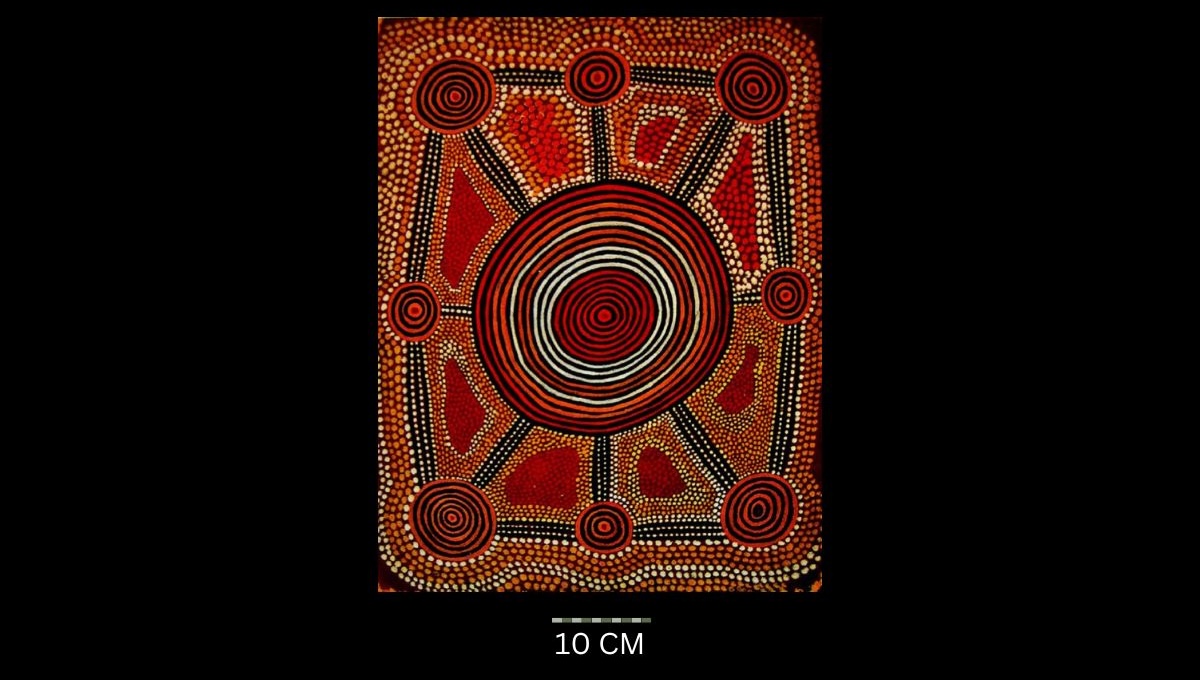
Untitled c. 1974
Synthetic polymer paint on composition board, bears artist’s name and the numbers 3 A1 RO on the reverse,
57 x 43 cm
UNSOLD
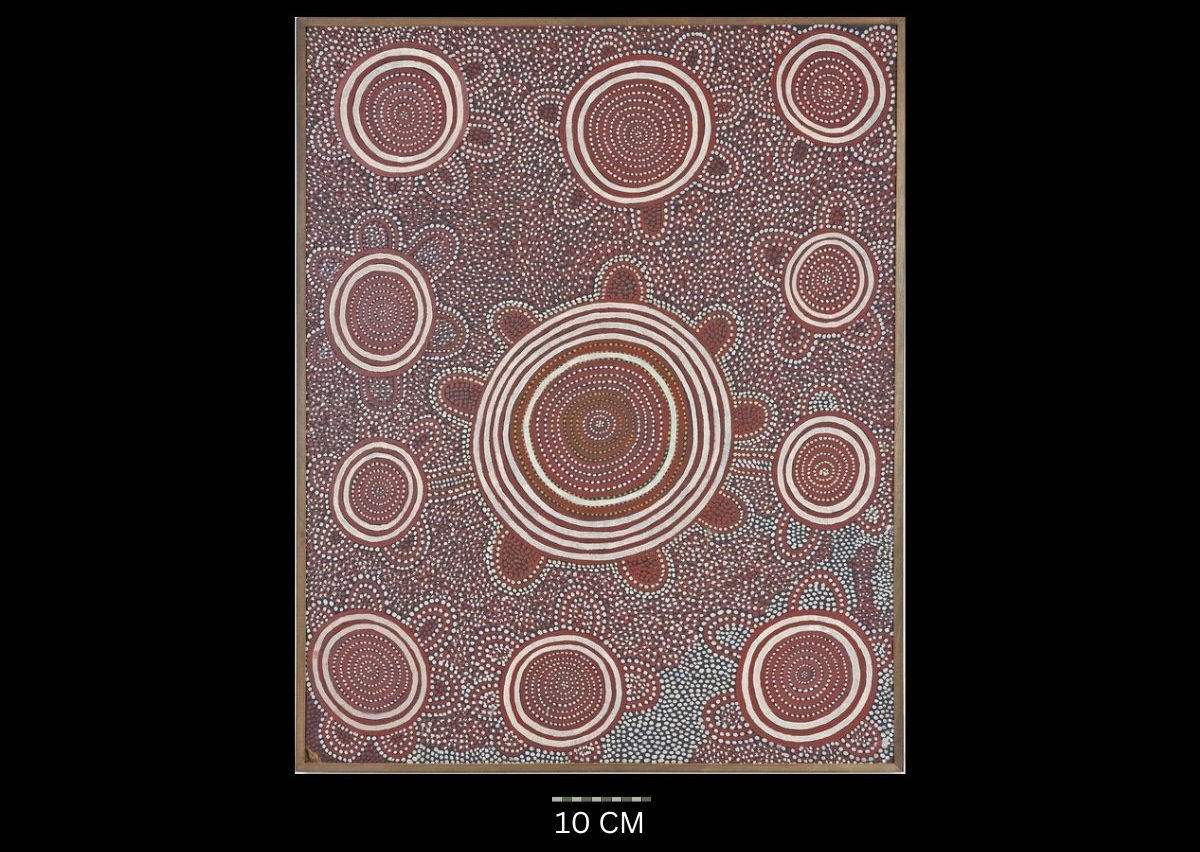
Tingari Dreaming at Warupuyunya Circa 1974
Synthetic polymer paint on composition board, includes Papunya Tula Art certificate of authenticity, descriptive notes and image/chart of painting in Geoffrey Bardon’s hand.,
75.5 x 60.5 cm
Hammerprice: A$9,000
John Kipara Tjakamarra artworks form 1975 – 2000
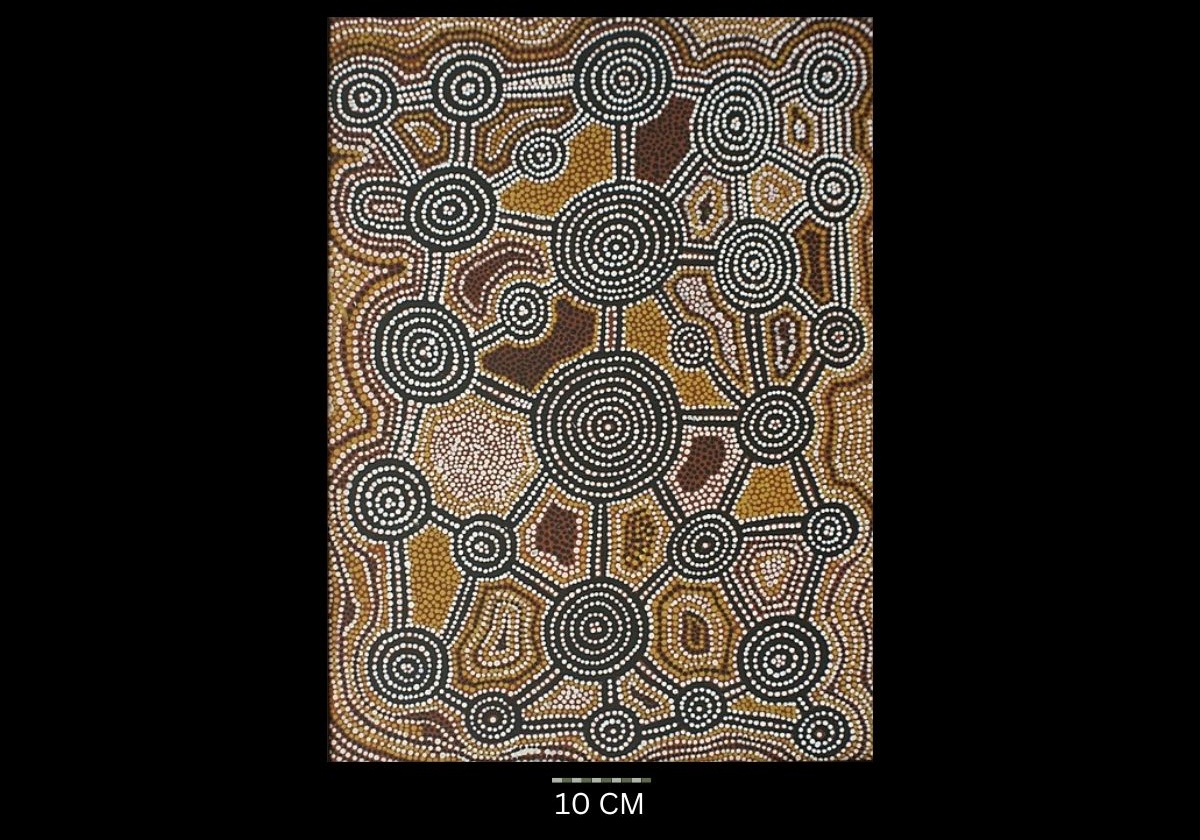
Barratjakuti 1979
Acrylic on canvas board,
74.5 x 54 cm
Hammerprice: A$800
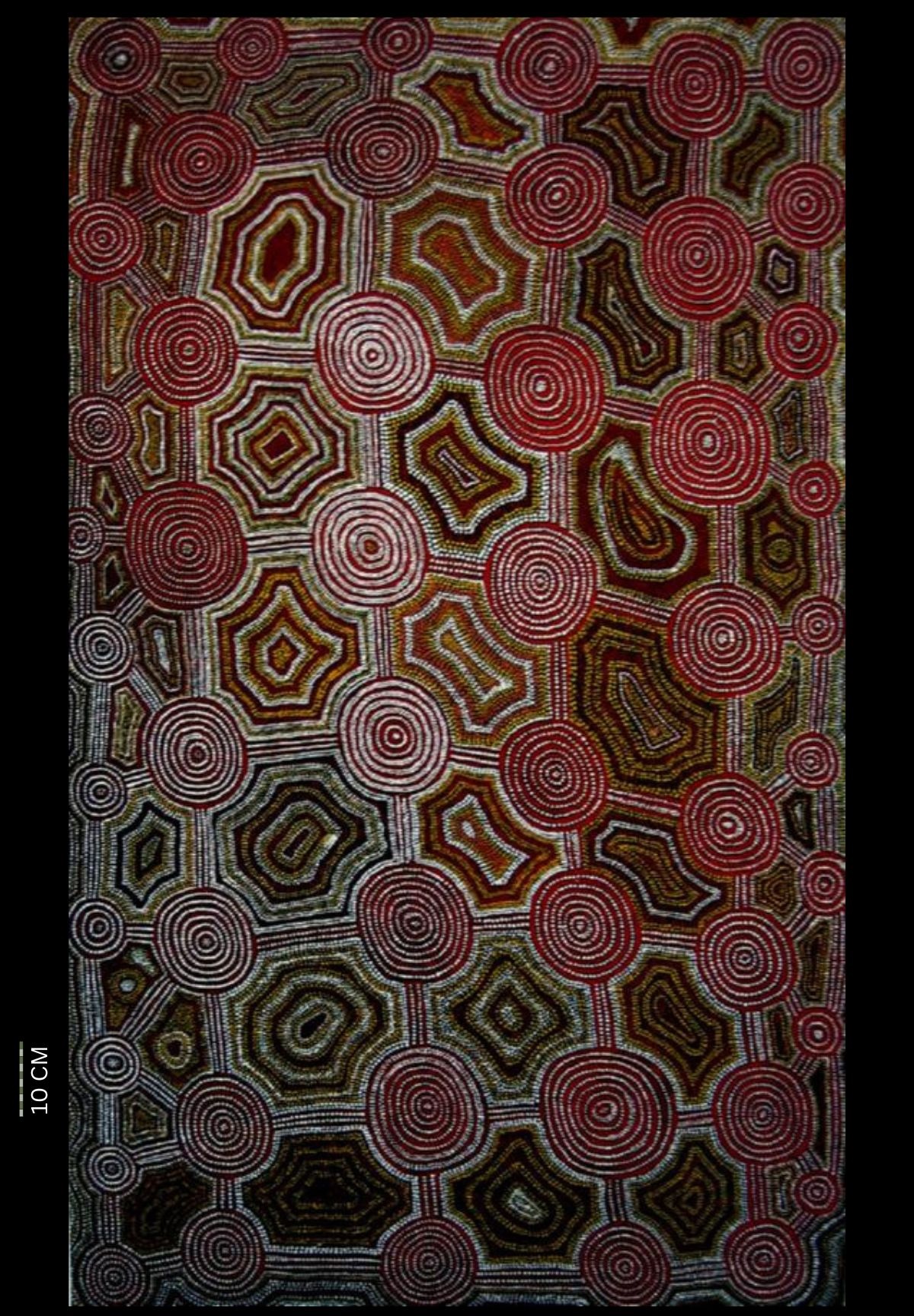
Untitled (The Rockhole Site of Kulkutanya) 1980
Synthetic polymer paint on linen,
169 x 99 cm
Hammerprice: A$8,000
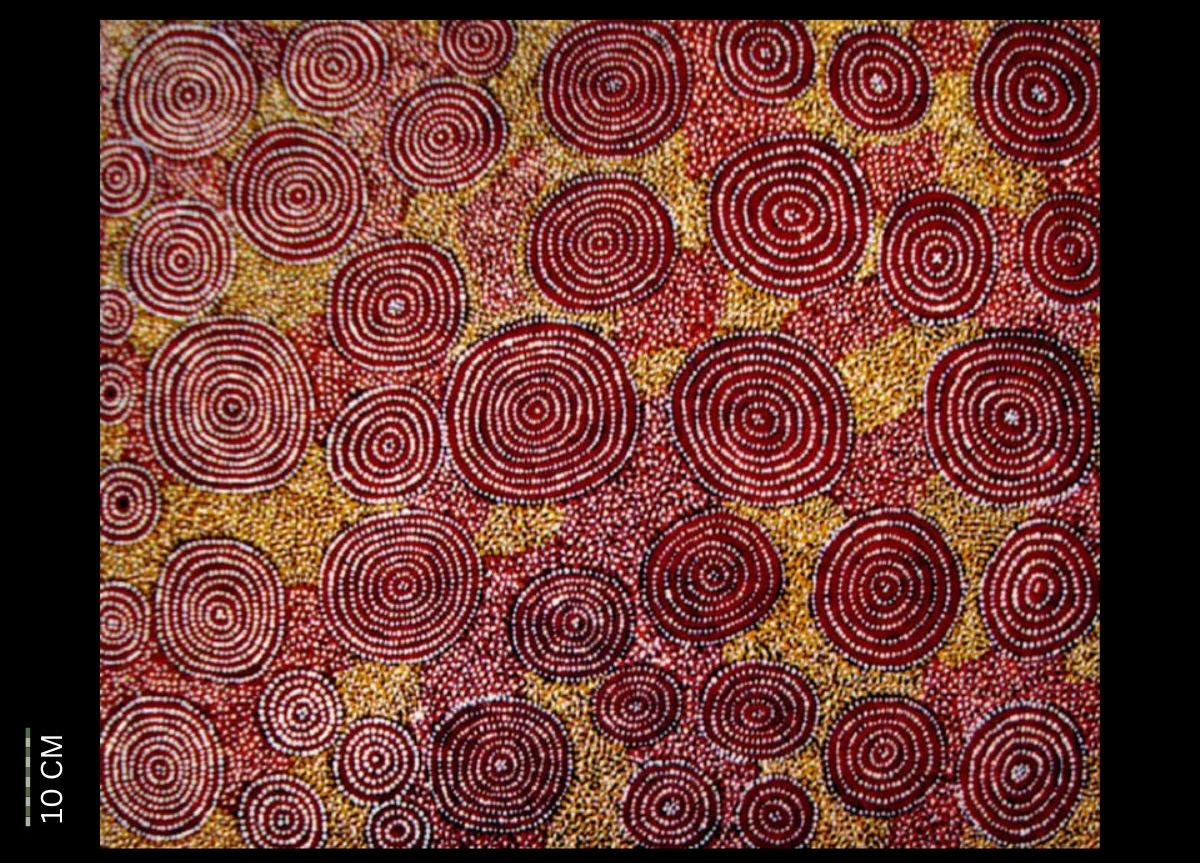
Untitled, 1981
Synthetic polymer powder paint on canvas, bears artist’s initials J. T. and the Papunya Tula catalogue number 811102 on reverse,
100 x 81 cm
Hammerprice: A$2,600
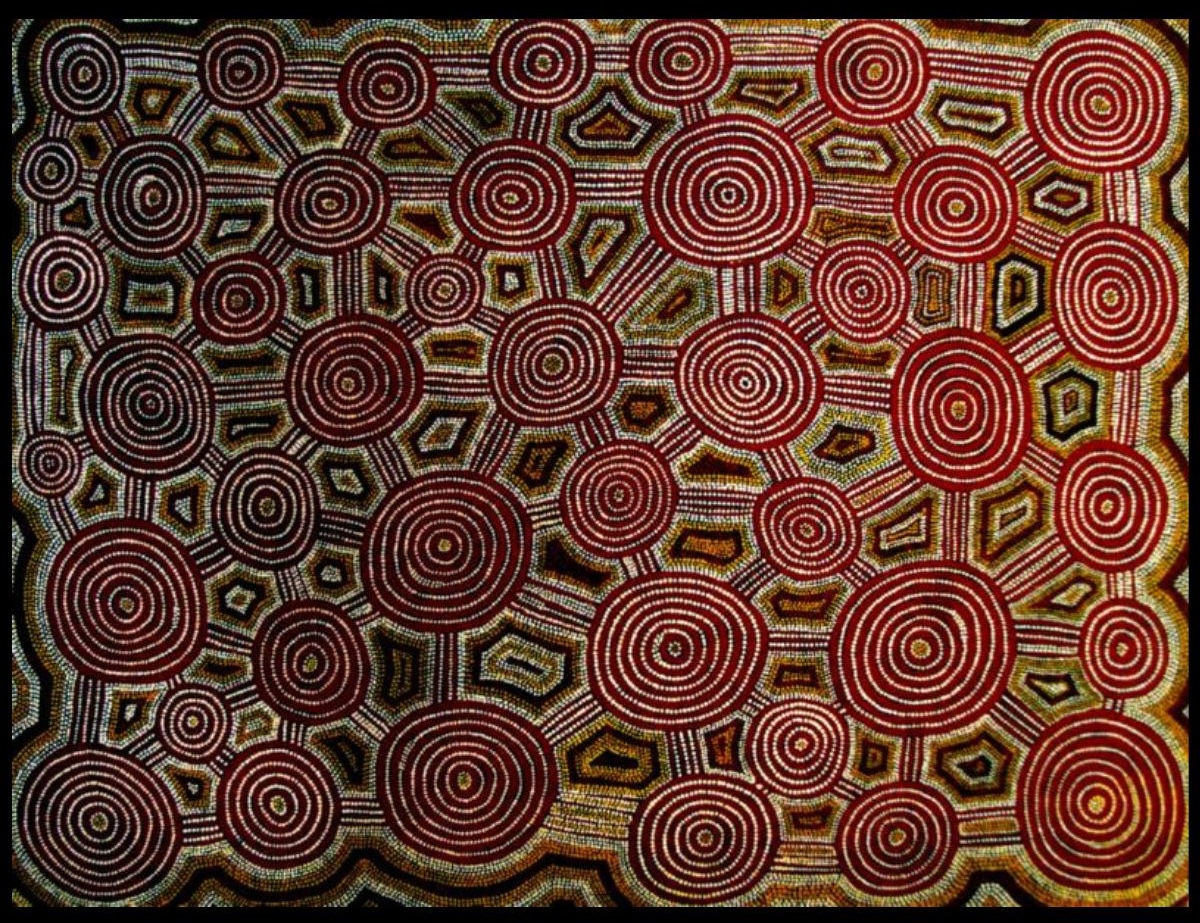
Tingari at Lintinga 1982
Synthetic polymer paint on canvas, bears Papunya Tula Artists catalogue number JT821026 on the reverse,
122 x 91 cm
Hammerprice: A$4,000
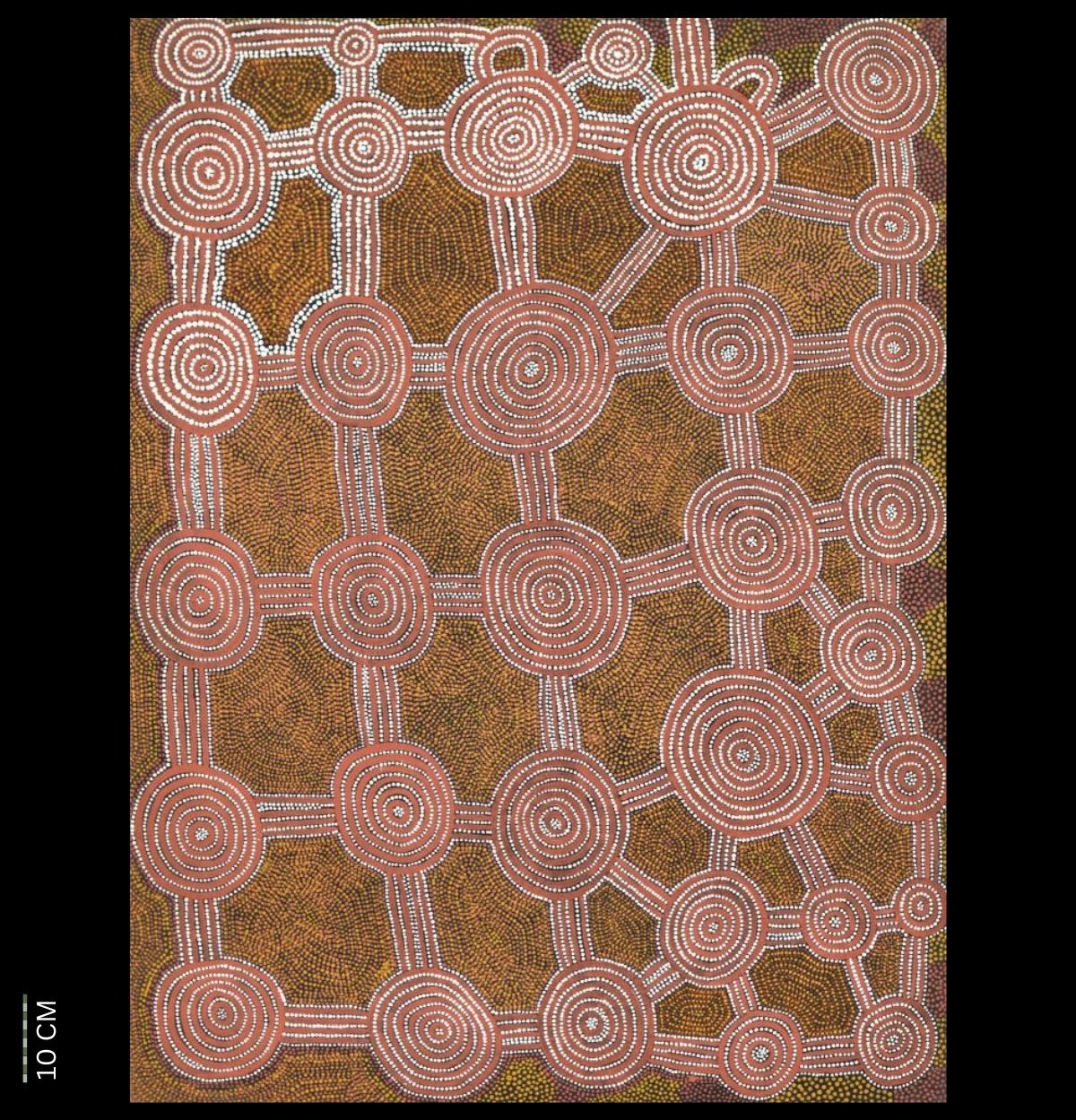
Tingari, 1982
Synthetic polymer paint on Belgian linen,
121 x 90.5 cm
Hammerprice: A$6,000
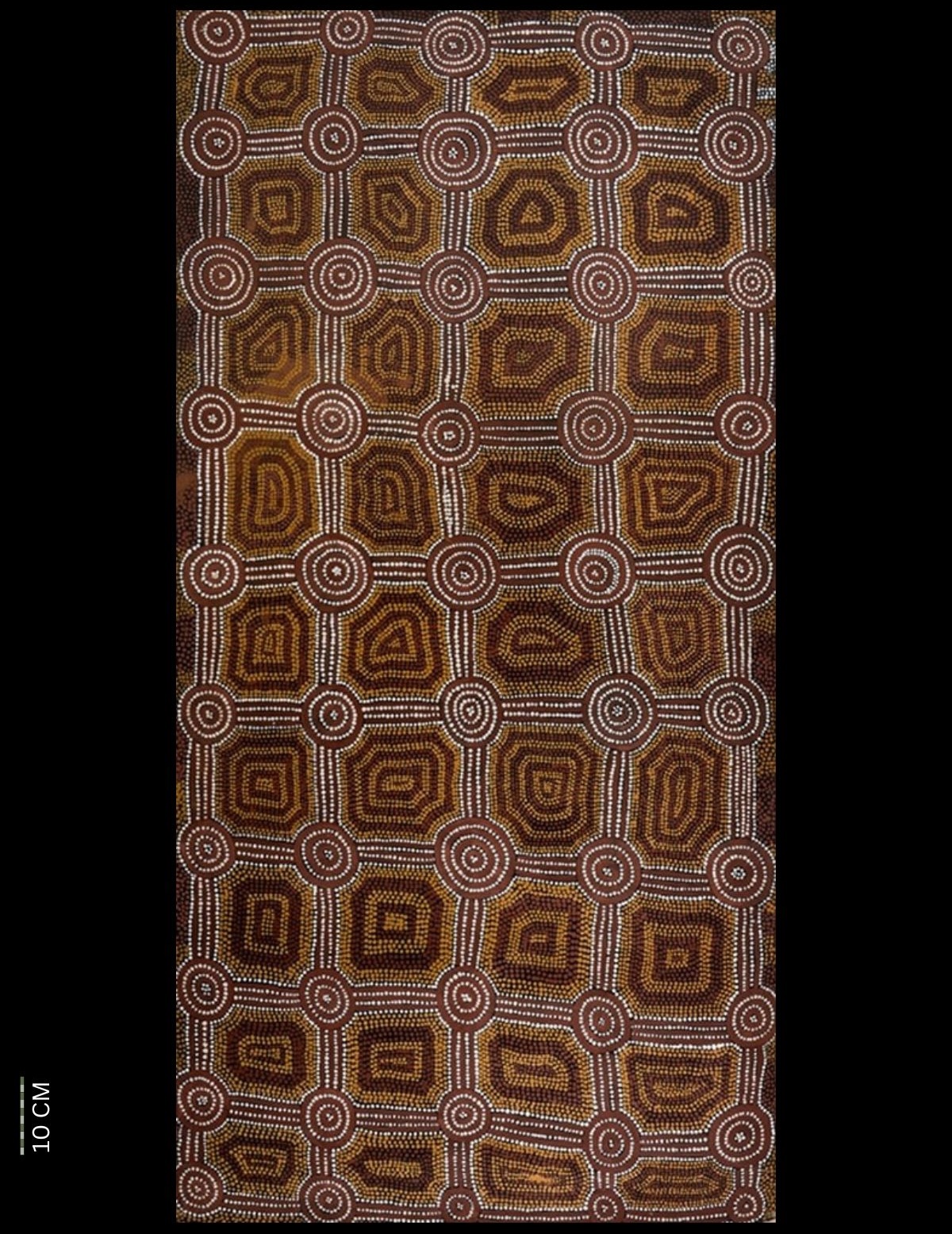
Untitled, 1984
Acrylic on linen,
152 x 75 cm
Hammerprice: A$2,750
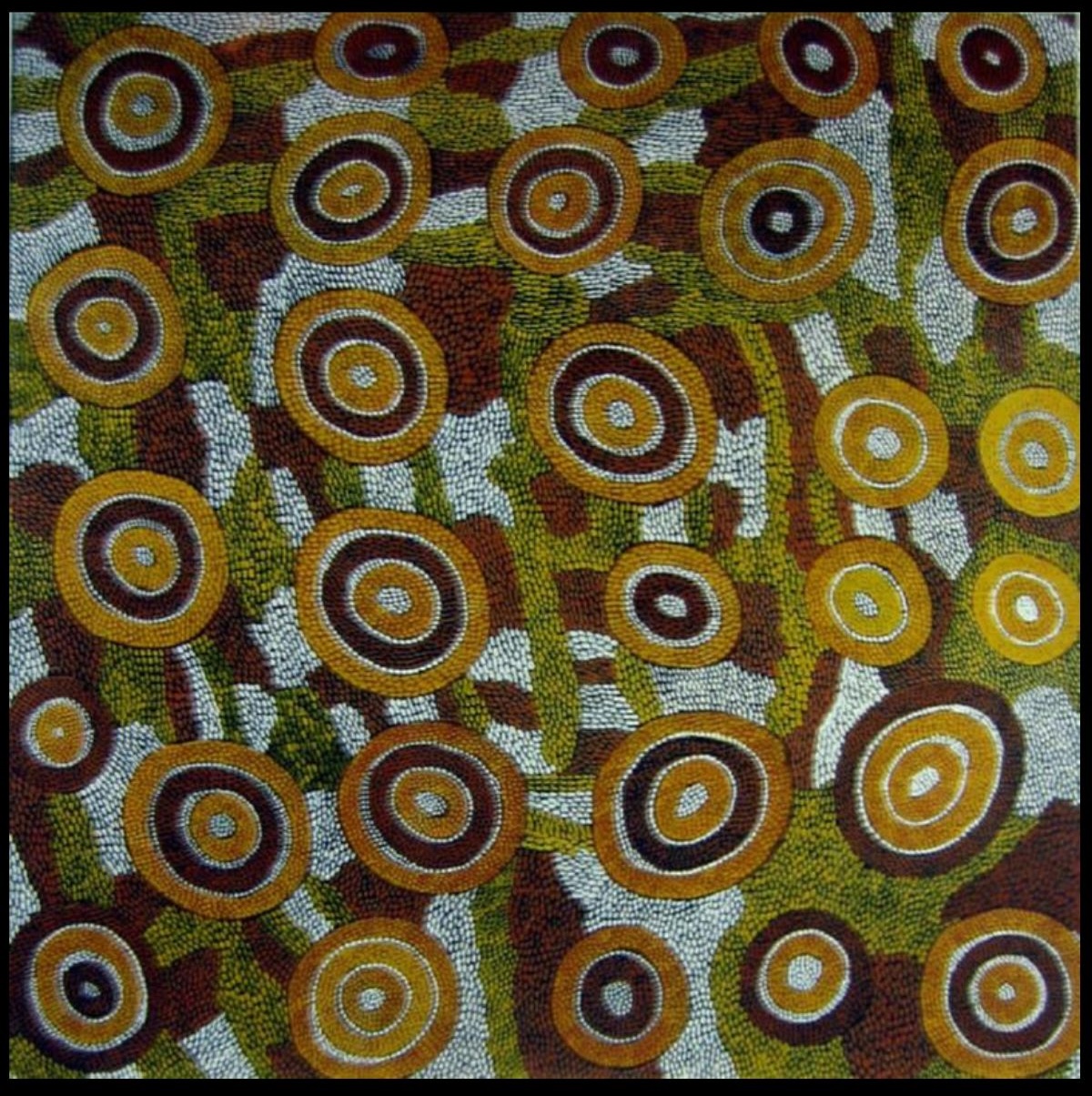
Bushfire Story Associated with the Site of Walungkakulpa, 1985
Synthetic polymer paint on linen, inscribed verso with artist’s name and Papunya Tula cat. no. JT850839,
139 x 139 cm
UNSOLD

Tinagari Events at Karrkurrintinytja 1985
Synthetic polymer paint on linen, bears artists name, Papunya Tula cat. no. JT851163 and cat. no. 2121 on the reverse,
183 x 122 cm
Hammerprice: A$6,500
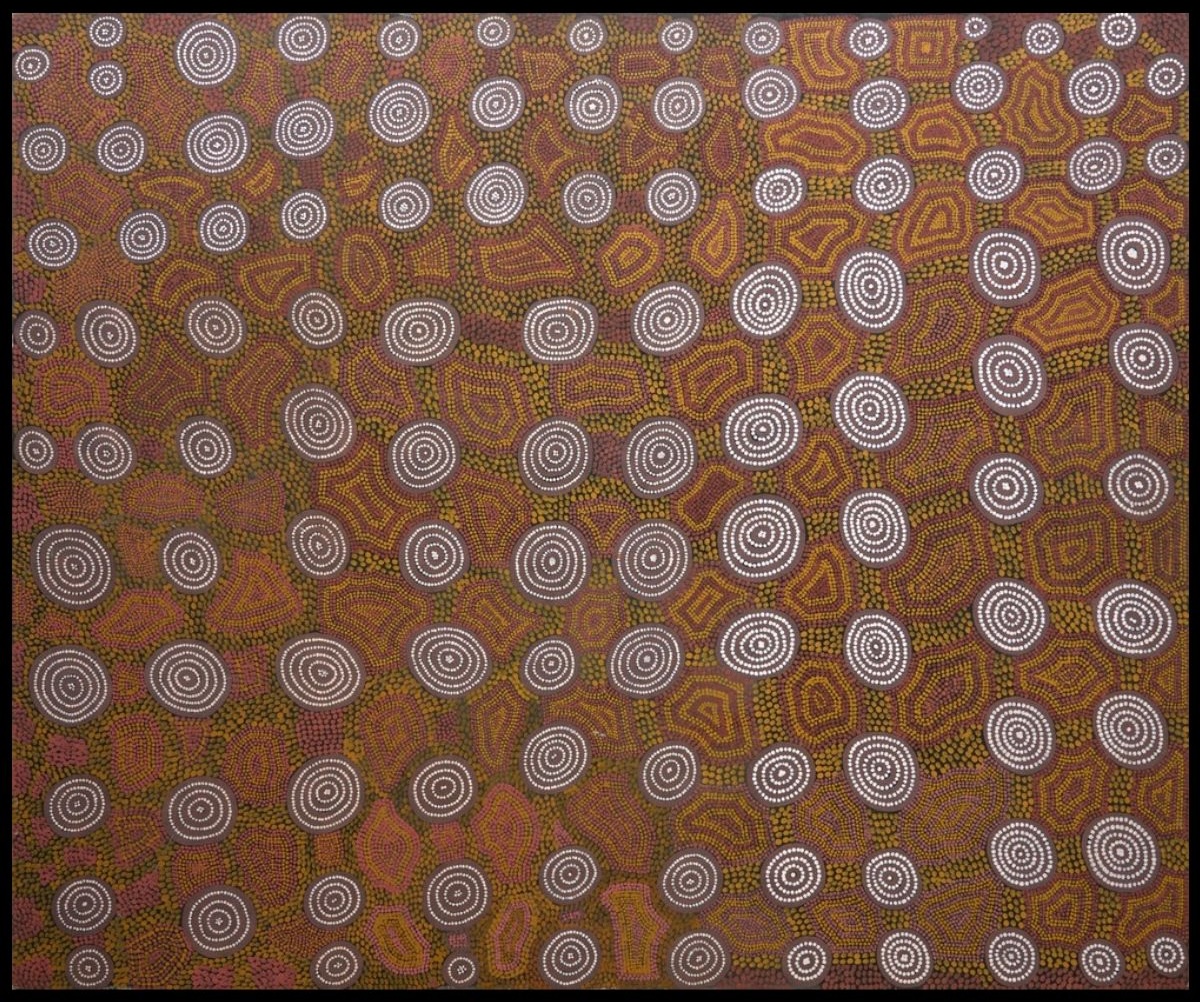
Untitled 1986
Synthetic polymer paint on canvas, inscribed verso with Papunya Tula Artists cat. no. JT860928,
152 x 183 cm
Hammerprice:A$9,000
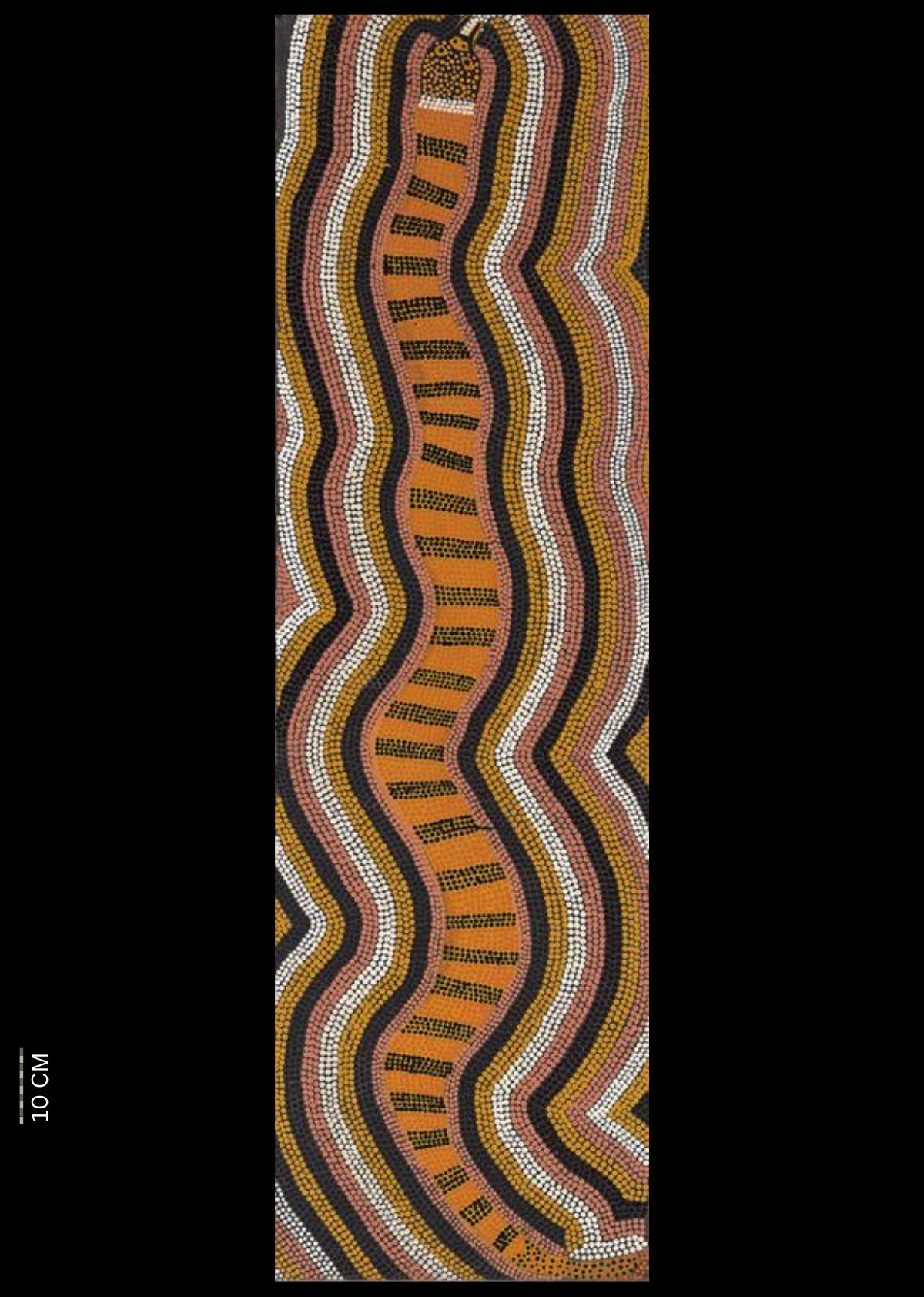
Untitled (1987)
Synthetic polymer paint on linen, bears Papunya Tula Artist cat. no. JT870507 verso,
165 x 48 cm
Hammerprice: A$2,400
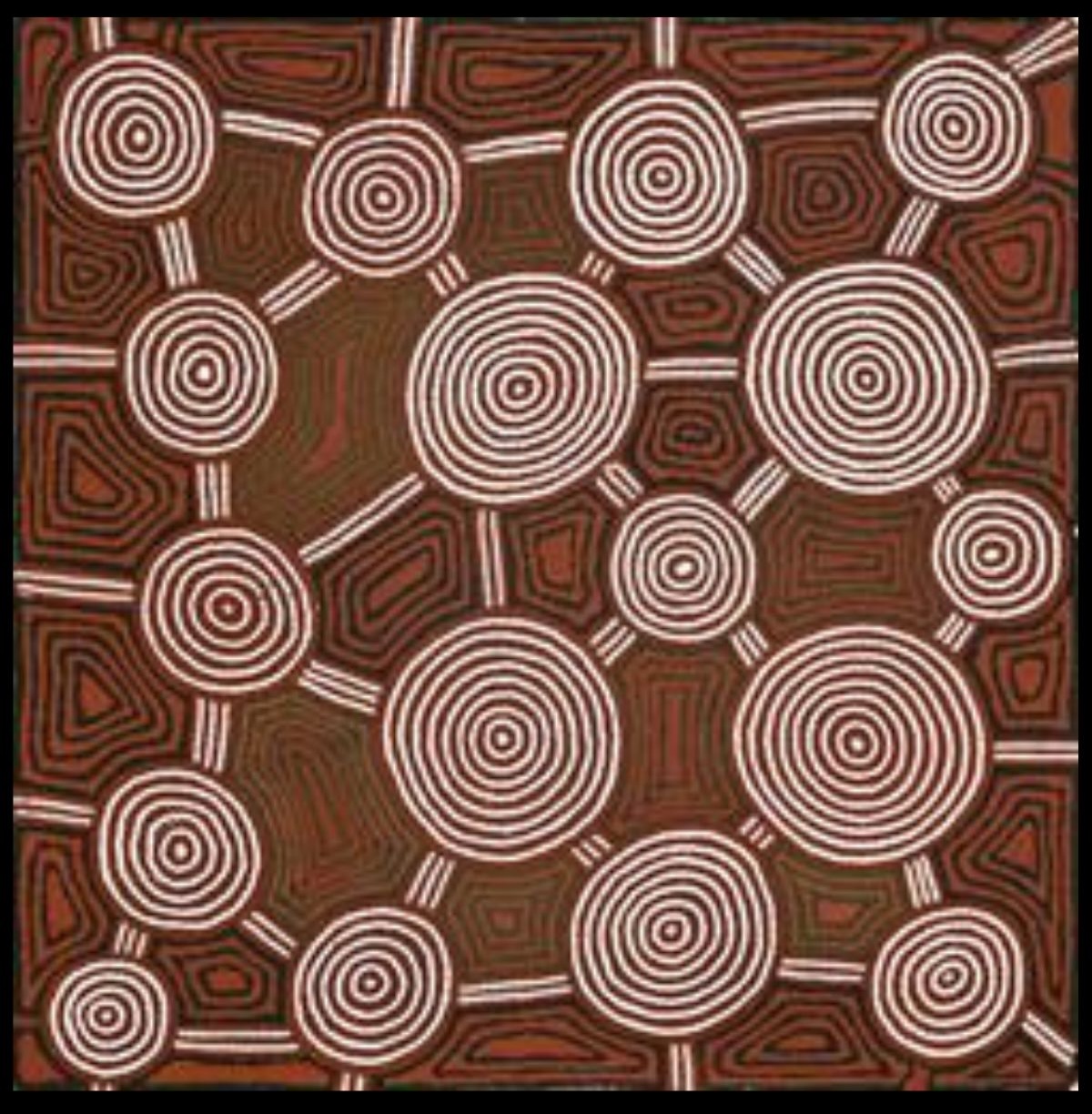
Kaakaratintja (Lake Macdonald), 1987
Synthetic polymer paint on linen, inscribed verso: artist’s name and. Papunya Tula Artists Pty Ltd cat. JT870969,
122 x 121 cm
Hammerprice: A$2,000
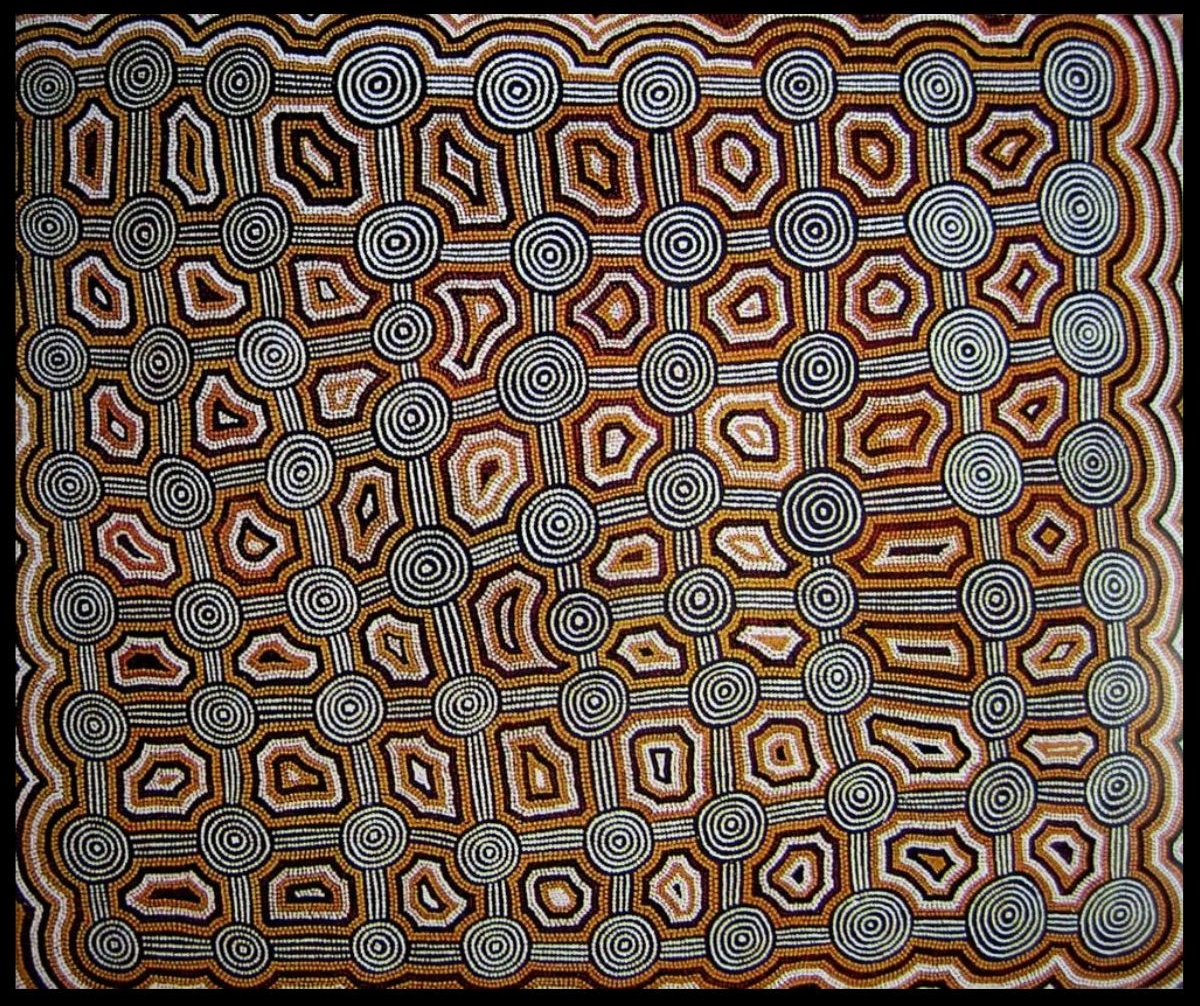
Designs Associated with the Tingari Events at Karrkurrutintja 1987
Synthetic polymer paint on canvas, bears artist’s name and Papunya Tula catalogue number on the reverse,
182 x 152 cm
UNSOLD
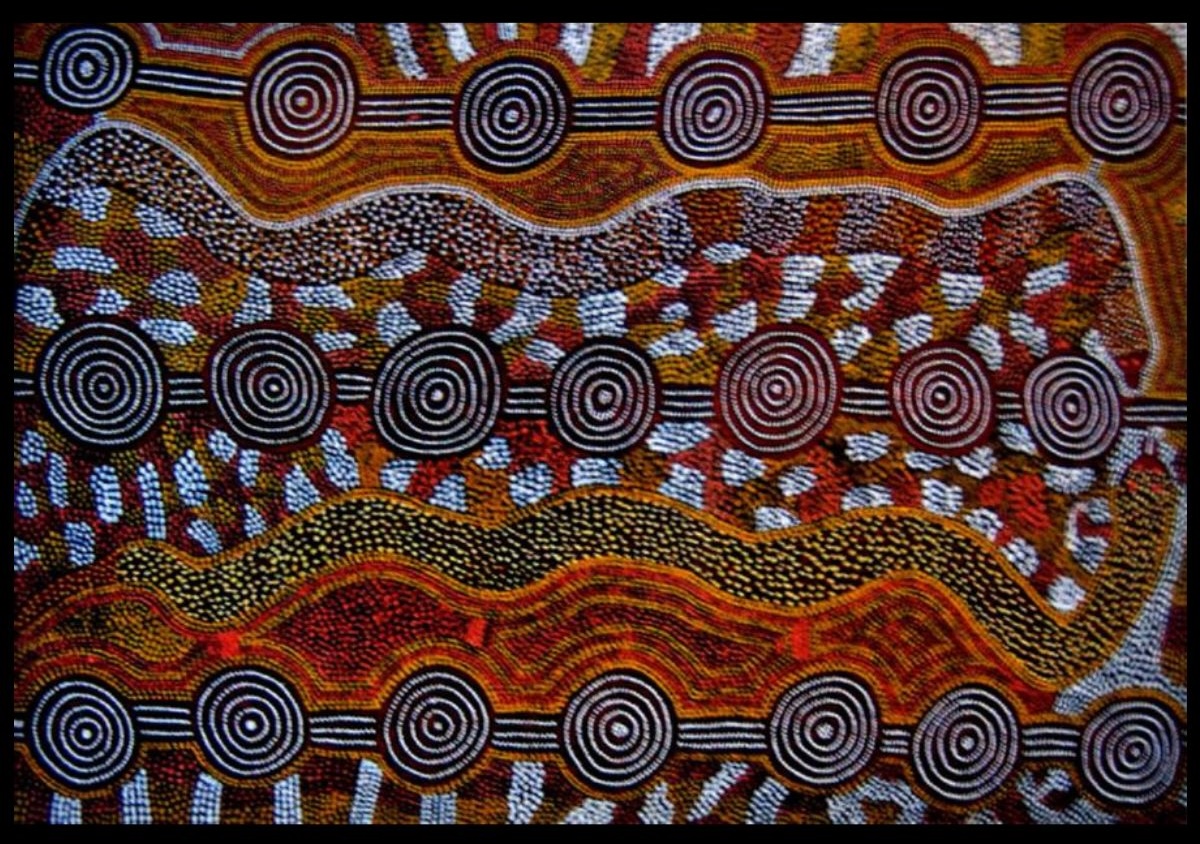
Untitled 1987
Synthetic polymer paint on canvas, bears artist’s name and Papunya Tula Artists catalogue number JT870636 on the reverse,
122 x 183 cm
Hammerprice: A$10,000
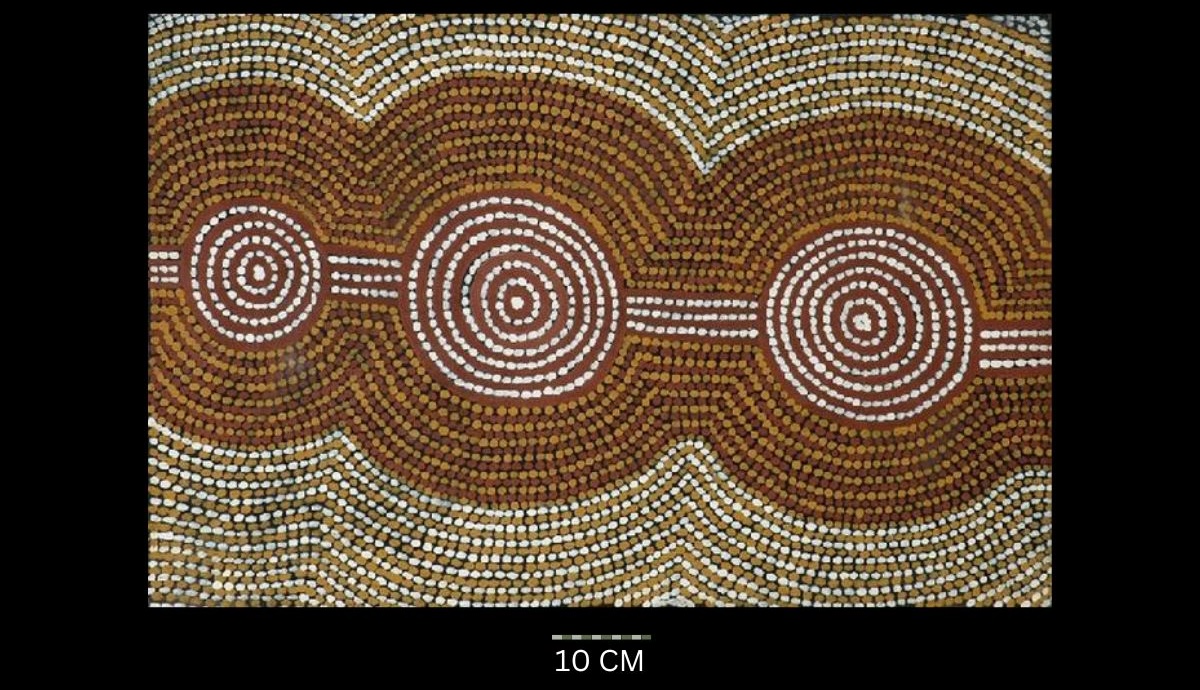
Untitled – Tingari 1988
Acrylic on canvas, bears catalogue number JT880450 and 122/01 verso,
90.5 x 60 cm
UNSOLD
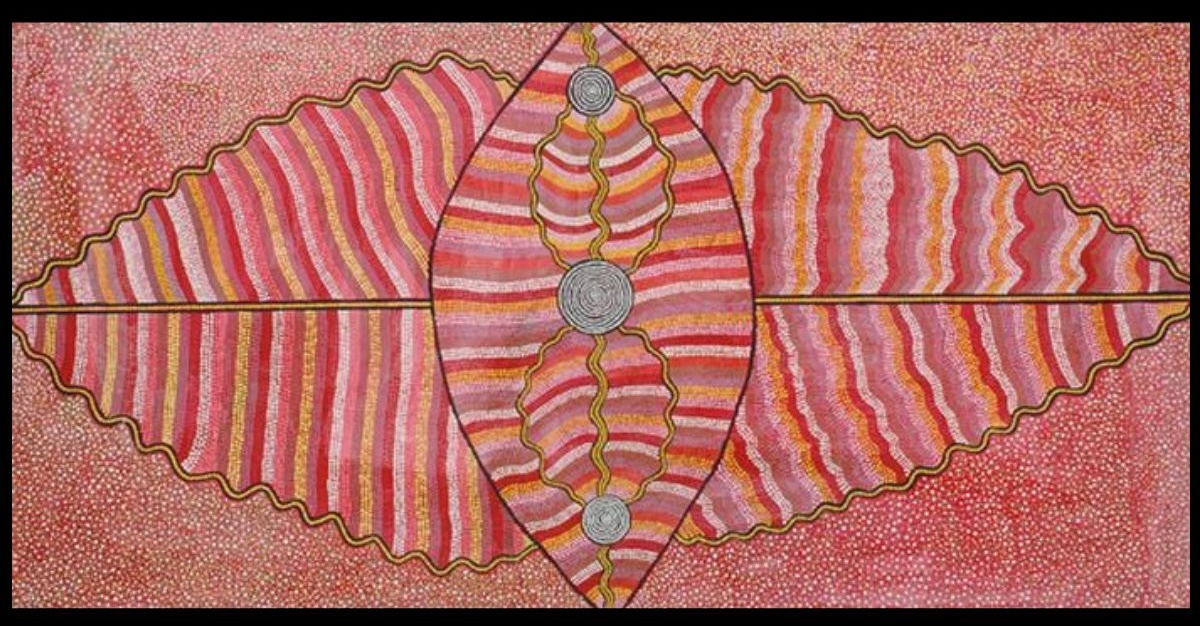
Sacred Cave Dreaming 1989
Acrylic on canvas, ‘John Roge [sic] Tjakamarra’ inscribed verso, bears catalogue number CSCA9 and CSCA label,
240 x 124 cm
UNSOLD
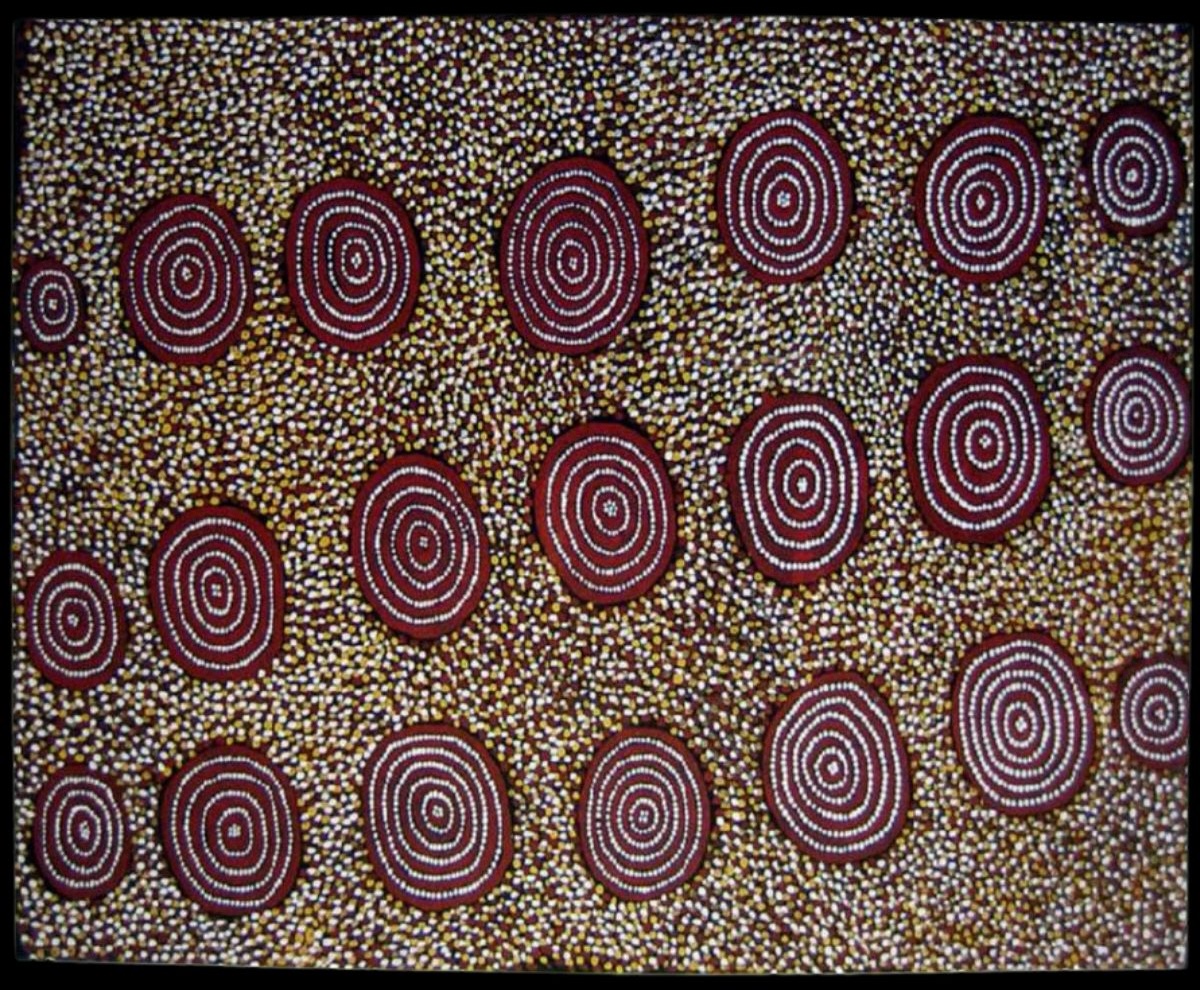
Tingari Men Travelling to Lintjinya 1992
Synthetic polymer paint on linen, bears artist’s name and Papunya Tula catalogue number JT920341 on the reverse,
152 x 91 cm
Hammerprice: A$1,500
John Kipara Tjakamarra artworks post 2000
In the late 1990s, John Kipara Tjakamarra artworks shifted dramatically—moving away from Tingari iconography and toward more experimental compositions featuring vivid synthetic colours such as blues, bright greens, and purples. These paintings, characterized by rounded rectangles and bold colour contrasts, marked a significant departure from traditional Western Desert aesthetics and, while visually dynamic, were not widely embraced by collectors or the broader Aboriginal art market.
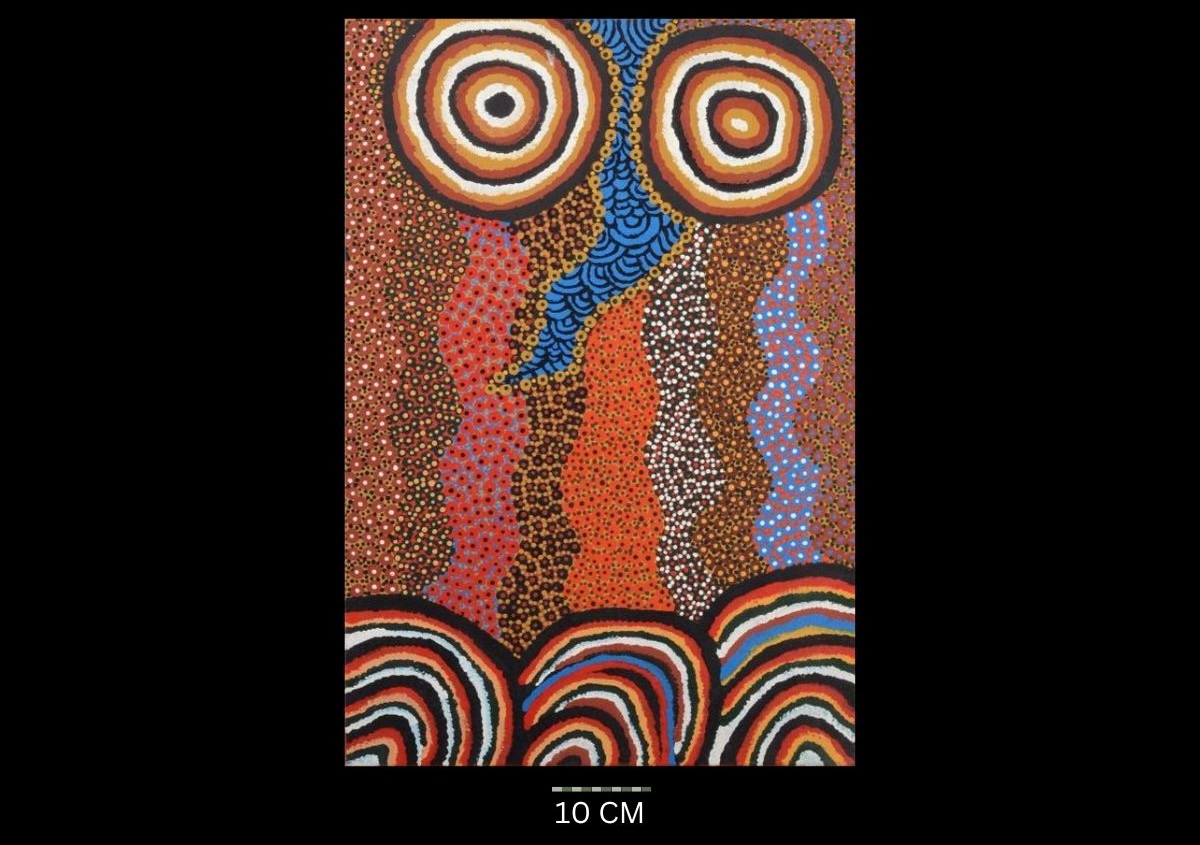
Eagle Dreaming Story (Tjungimunda Hills Near Father’s Country – Kiwikurra, Great Sandy Desert) 1999
Acrylic on canvas, inscribed verso with Warlayirti Artists, WA, cat. no. 464/99 and GG 170299,
74.5 x 51 cm
Hammerprice: A$300
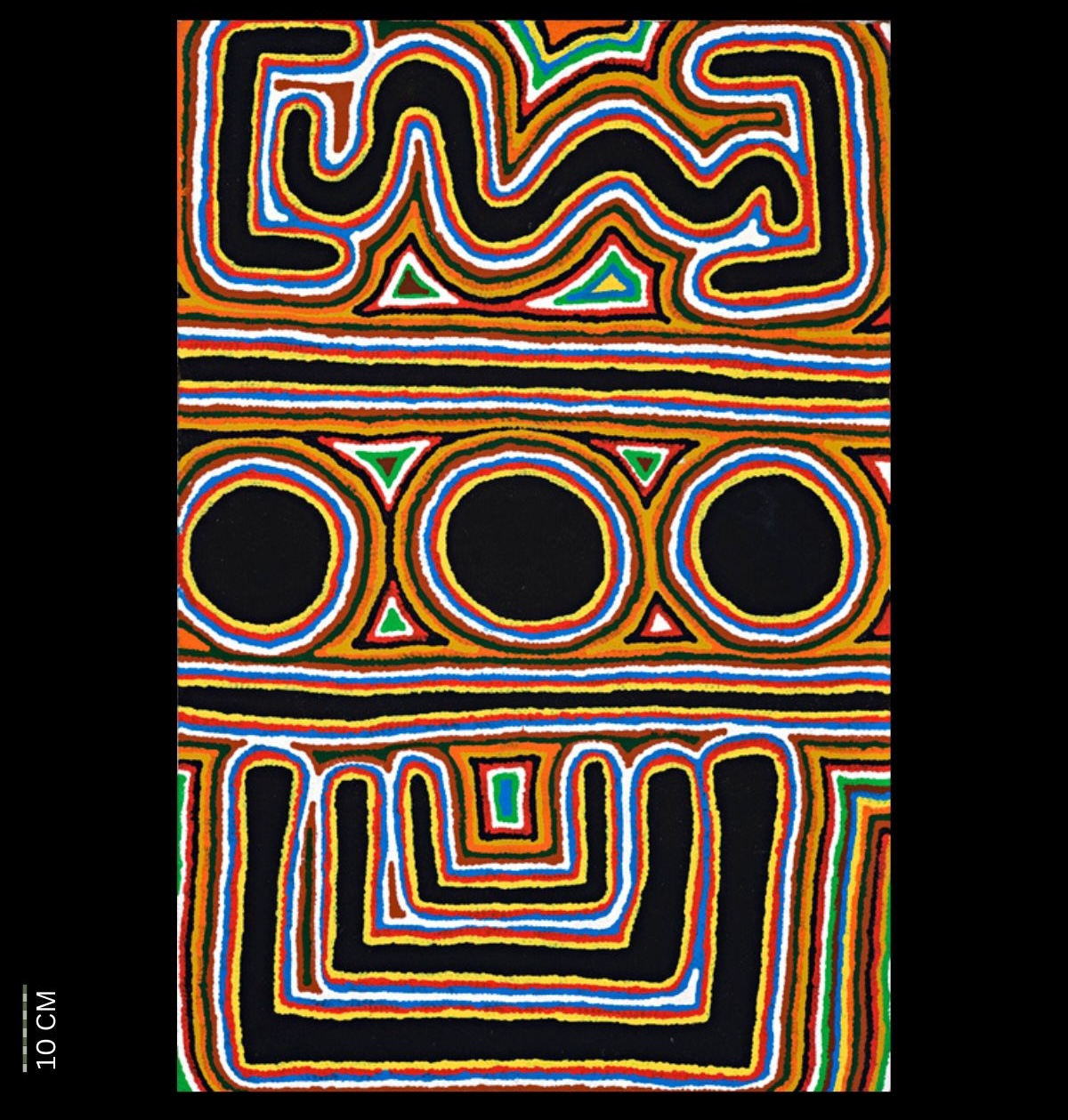
Wilgingarra, Marruwa and Bibbar, 1999
Synthetic polymer paint on linen, inscribed verso, artist’s name, size, Warlayirti Artists cat. 798/99,
120.5 x 80.5 cm
Hammerprice: A$2,600
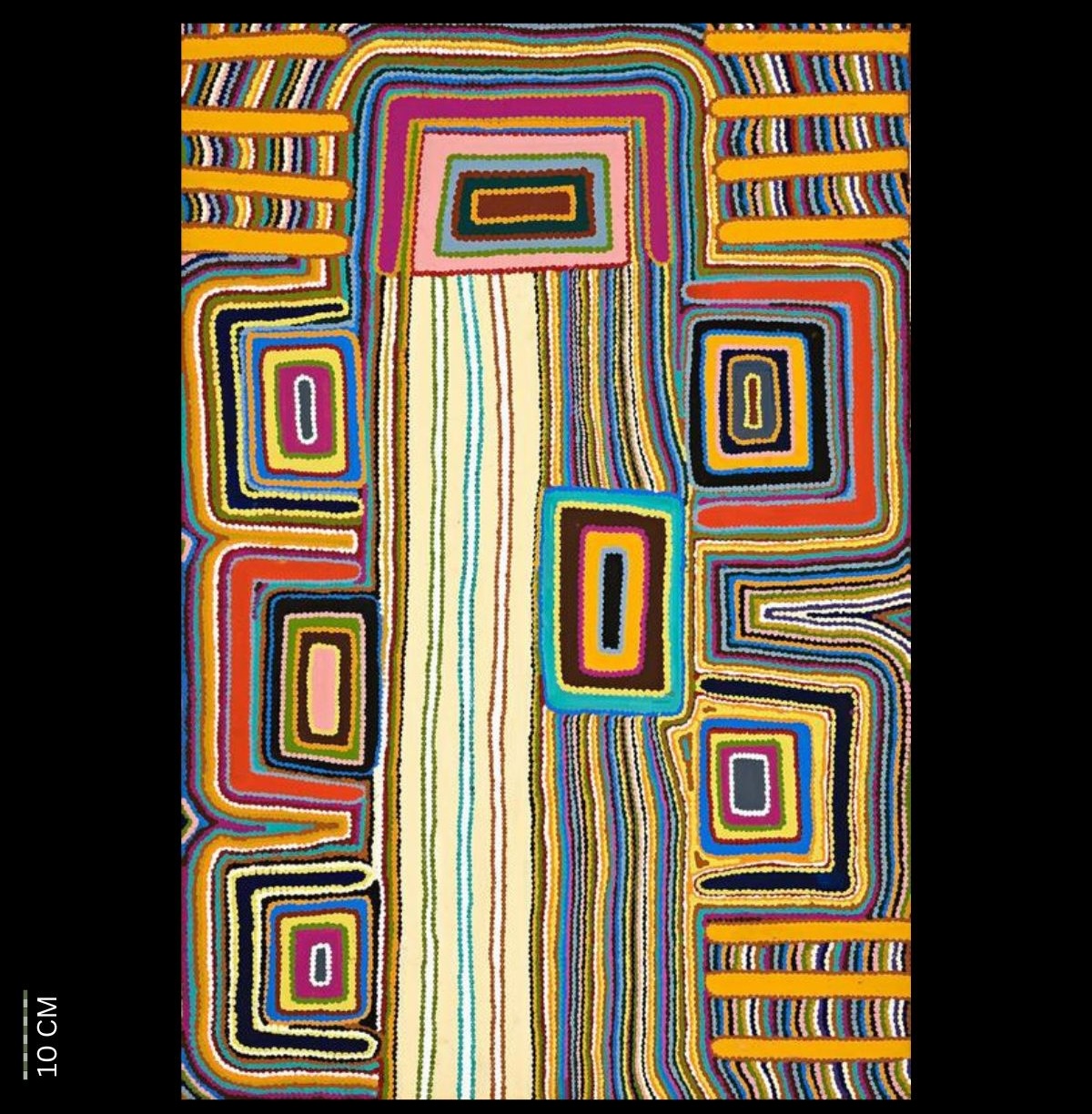
Walawala, 2002
Synthetic polymer paint on canvas, inscribed verso: artist’s name and size,
118 x 80 cm
Hammerprice:A$3,200
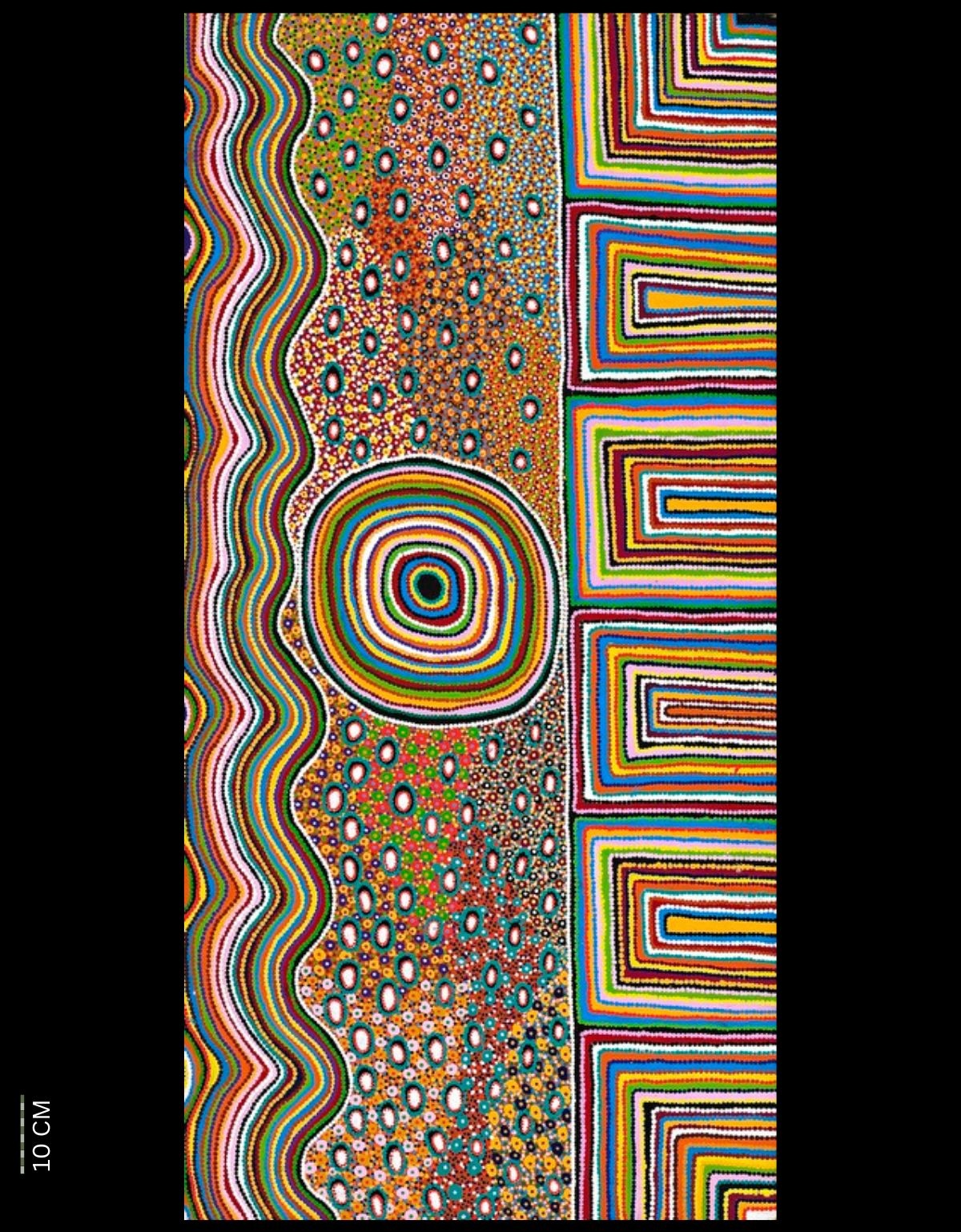
Bullun Bullun, 2002
Synthetic polymer paint on linen, bears inscription verso: artist’s name, size and Warlayirti Artists cat. 1317/02,
150 x 75 cm
Hammerprice: A$2,800
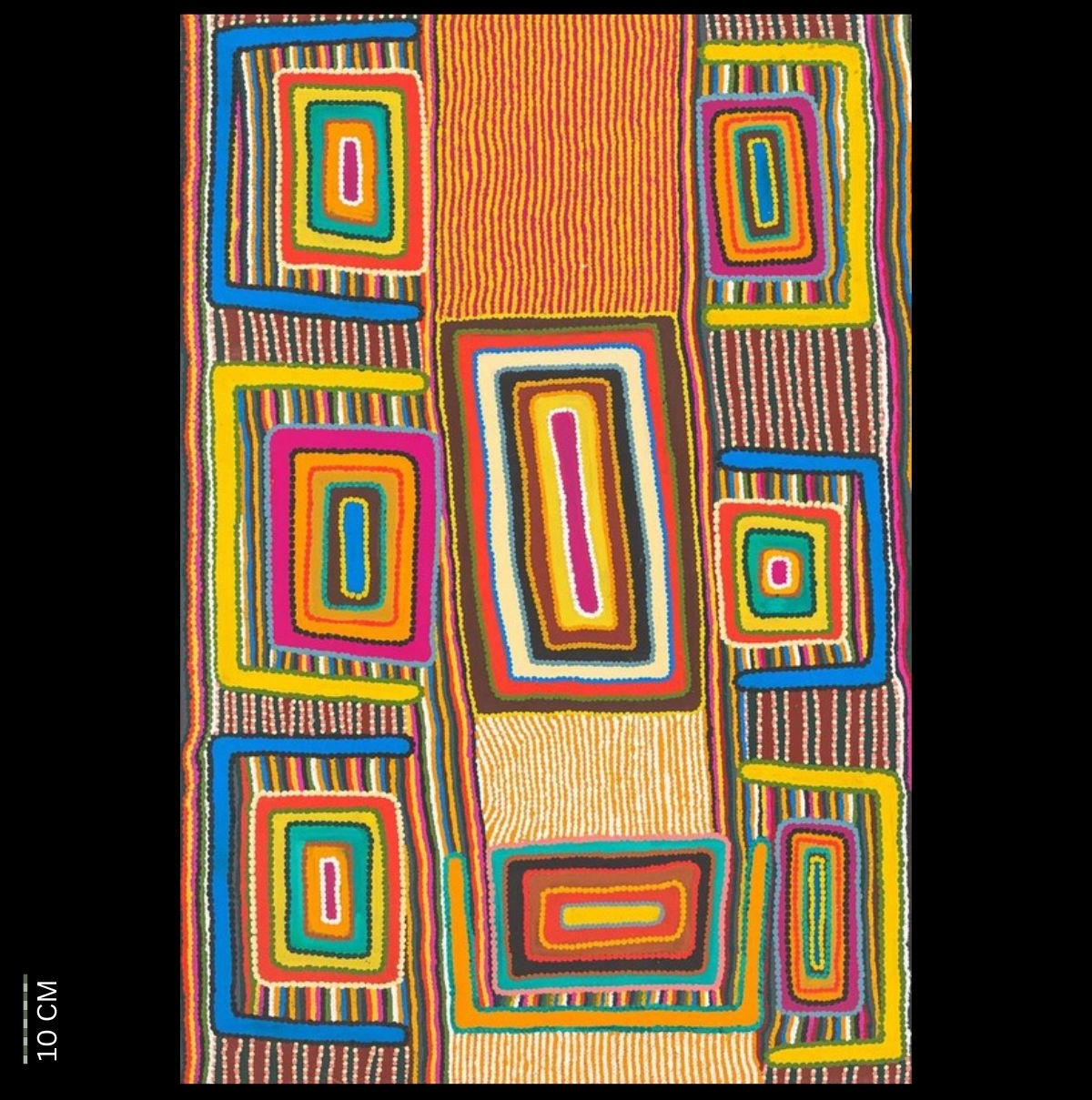
Lurrnpa Wirrimanu (2002)
Synthetic polymer paint on canvas,
117.5 x 80 cm
Hammerprice: A$1,800
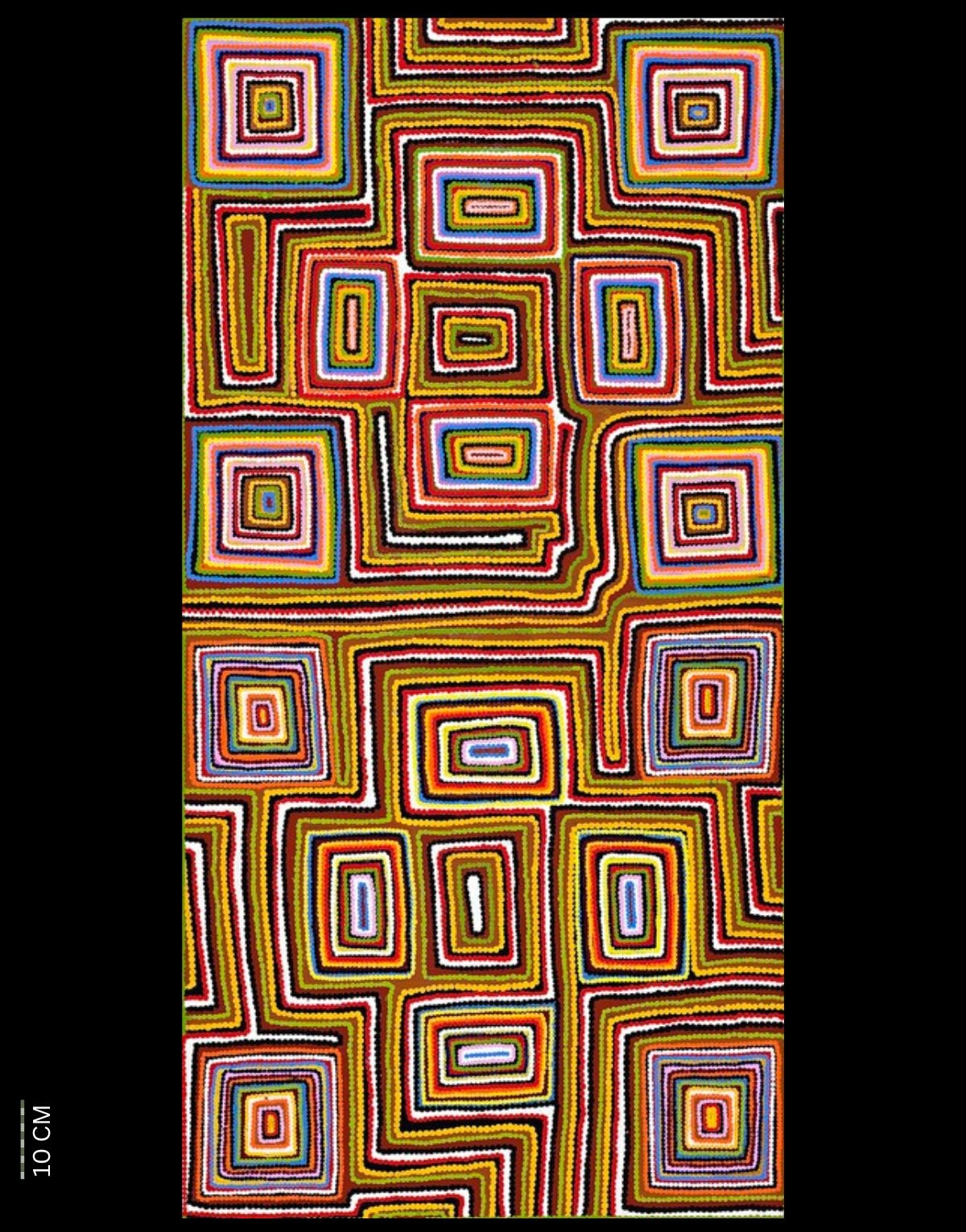
Luurnpa, 2004
Synthetic polymer paint on linen, bears inscription verso: artist’s name and Warlayirti Artists cat. 73/04,
149 x 75 cm
Hammerprice: A$1,600
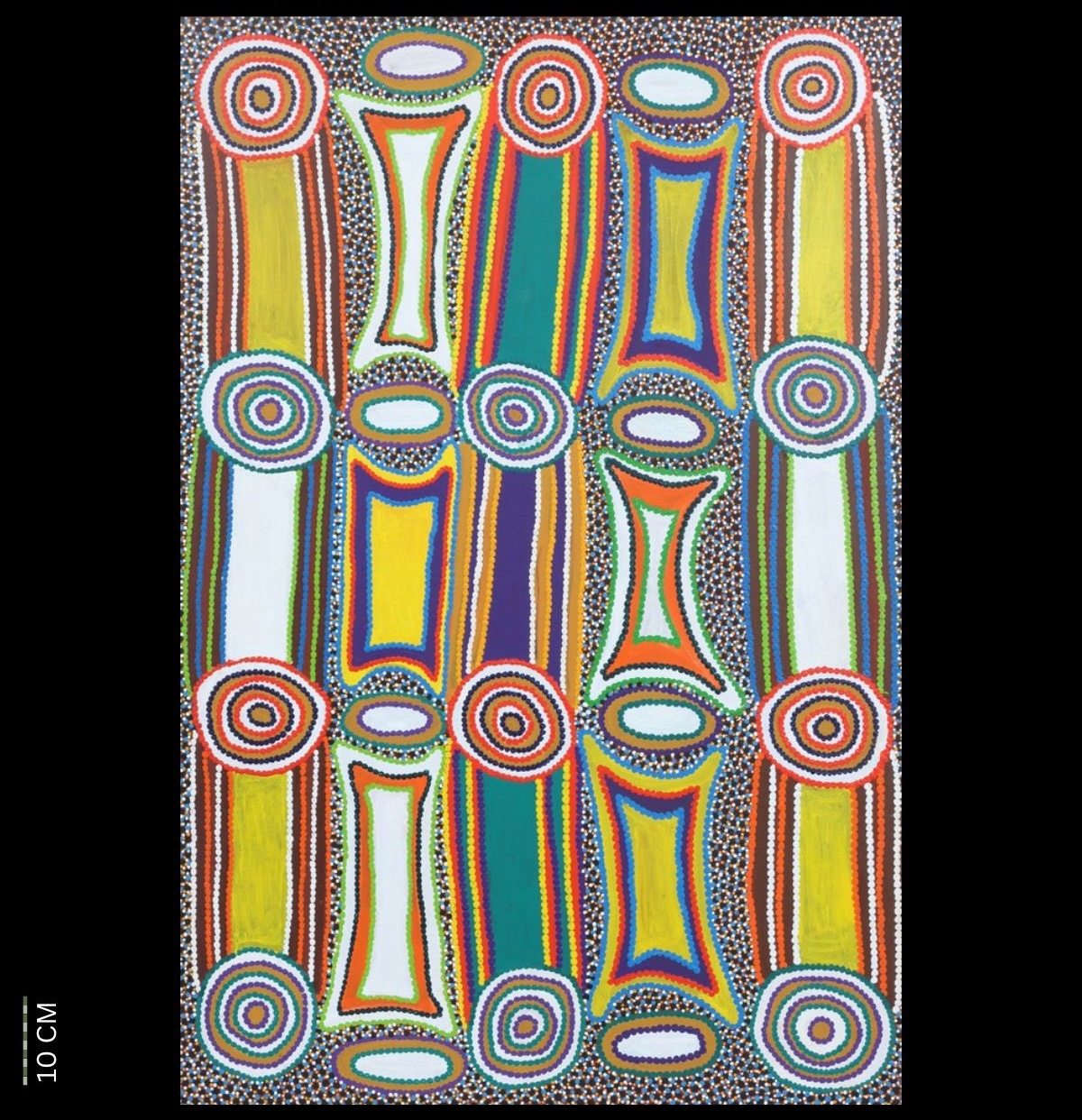
Luurnpa
Acrylic on canvas, labelled verso,
120.5 x 80.5 cm
UNSOLD
John Kipara Tjakamarra references
Papunya: A place made after the Story
Early Papunya Artworks and Articles
All images in this article are for educational purposes only.
This site may contain copyrighted material the use of which was not specified by the copyright owner.
